

Annual ORT Mystery Concert scrapped for incoming students
University cites ‘safety concerns’ in decision to remove the concert
Jonathan Reilly Senior News Editor
This fall, first-year students won’t be crowding Miller Hall’s lot for a surprise show.
The Orientation Mystery Concert, a long-standing event featuring a surprise headliner exclusively for incoming first-year students, has been removed from this year’s orientation schedule. Past years have included headliners such as Yung Gravy, Marianas Trench, and, most recently, the student band Carnelian. The event was reassigned to the Campus Affairs Commission (duringCAC) during a the January AMS Assembly
the journal FIRST YEAR IN FOCUS
Roundtable (ORT) portfolio to the Campus Affairs Commission (CAC) after a survey allegedly indicated first-year students viewed the event as costly and preferredlargerperformers. The Journal was deniedacopy ofthesurveyresultsto verify the AMS’s findings. This survey prompted the change to move the concert outside of ORT’s responsibility, with the idea of offering it to more than just first-yearstudents
In an interview with The Journal, President Jana Amer and ORT Coordinator Ali Haider—soon
University, just not allowing space on campus to allow for the mystery concert or [provide us] insurance to sanction the mystery concert. So that really put us in a position where our hands were tied.”
In a statement to The Journal, the University said the decision to cancel the concert was made “jointly” with the AMS, but AMS didn’t explain the reasons that led to the cancellation.
“In 2024, the University and the 2024-2025 AMS and ORT executive teams engaged in a series of collaborative discussions about ongoing safety concerns with the ORT Mystery Concert. Jointly, the two groups determined it wasn’t possible to mitigate the risks associated with this event,” the University added.
The University explained that
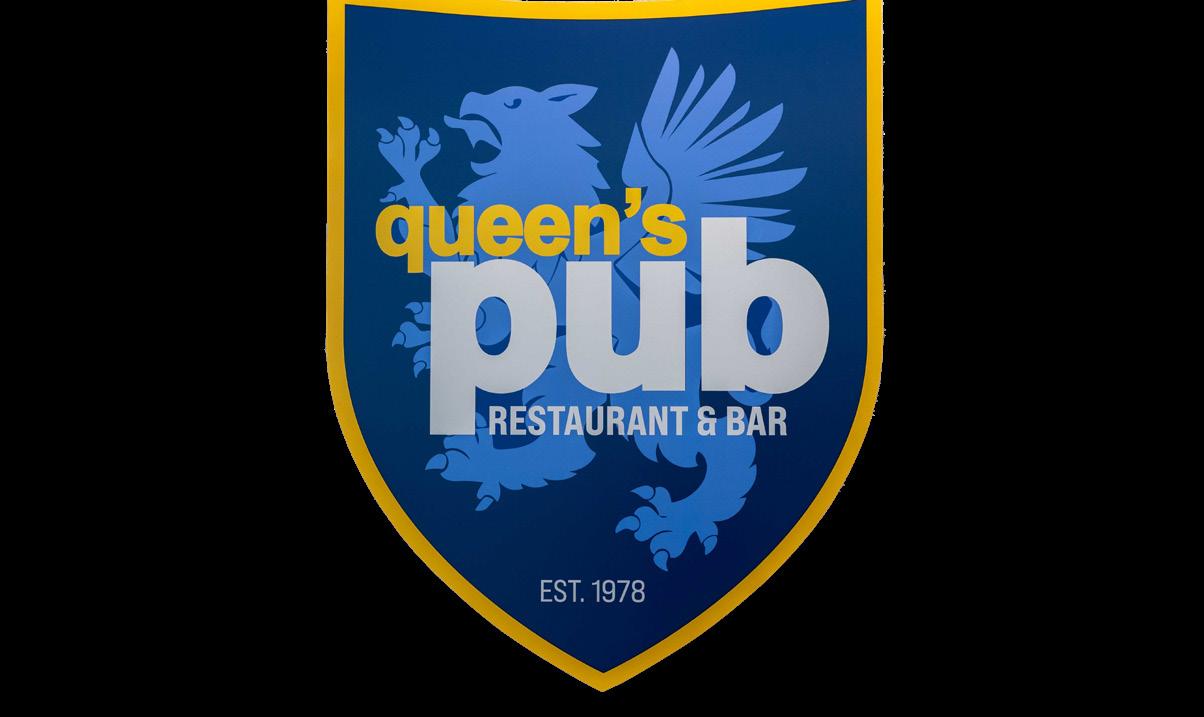
to be replaced by Jonathan Shenouda as ORT Coordinator following Haider’s resignation— explained why the concert won’t be taking place this year.
“Having it happen during the orientation period was something that raised a lot of alarm bells for the University,” Amer said. “It kind of came down to the
another event will take place in the concert’s absence.
“This year, we’re [the University] excited to feature a Friday night football game as part of Fall Orientation. On Friday, September 5, 2025, Queen’s and Laurier will
Queen’s Pub AI post leaves a bad taste in the mouth of students
Meghrig Milkon Editor in Chief
Queen’s Pub’s AI post stirs more thanappetite.
A Queen’s Pub promotional post, now deleted, was shared during Convocation Week and titled “Your Parents Are in Town,” which included two AIgenerated images of menu items, steak and salmon, that hadn’tyetbeenmadebythe chefs. In an interview with The Journal, Vice-President (Operations),Elena

Nurzynski confirmed the use of generative AI, citing logistical reasons.
“Since these were menu items that didn’t exist on our regular menu, there were no existing photos of them. In situations like these, you have to consider factors involving minimizing food waste, cost-efficiency, and delivery times of the products we are looking to promote from our suppliers,”
Nurzynski said.
“We also wanted to have adequate time to market these

products, so students were aware of the specialties available to them. Considering these factors, AI was used to provide the images.”
But the situation escalated after the pub posted an Instagram story claiming, “Photos are 100 per cent real and not AI-generated,” a statement later walked back following an inquiry from The Journal.
“[The] Post’s intention was meant to poke fun at ourselves and provide humour over the situation as a way to humanize the staff

face off in one of the first football games of the season. This game will feature first-year specific programming, and serve as an introduction to Queen’s spirit, tradition, and the Gaels community,” the University wrote.
Amer later clarified what kind of issues were taken with the concert, pointing out reports to the Sexual Violence Prevention and Response Services (SVPRS).
“I think there was a lot of worry about just the kinds of things that would happen concert, mainly an open floor concert, [...] and previous incidents that have been reported to the SVPRS,” she said. Haider also explained that incoming first-year students have received schedules indicating the concert will no longer be
run, but then they’re also aware of the university wide events that take place, so they know that a concert will not be taking place” Haider said.
After the interview, The Journal followed up to determine whether the removal of the concert has been explicitly communicated to firstyear students, or if it’s been implied to students through its removal from the schedule. Despite the request, The Journal didn’t receive a clear answer.
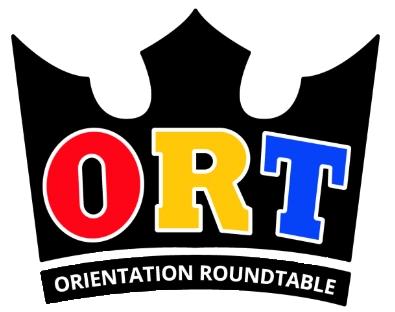
forward, Amer expressed that the AMS is still planning on running a concert by the CAC in upcoming years. While she couldn’t offer specific details, explaining it’s still in the planning phases,
taking place.
“First-year students are fully aware [of the change], we have a lot of schedules going out. Each of the faculties have their own individual events that they
behind the service. Our student staff are new to their roles, and these are situations that can be tricky to navigate,” Nurzynski said.
She also clarified that communication decisions typically involve consultation between service managers and permanent staff, with final oversight varying by service, but ultimately falls under the responsibility of the executive.
Nurzynski, who ran on the platform of transparency this past winter, was quick to reaffirm that its top priority, though acknowledged the organization is still learning how to navigate AI usage.
“When it comes to our services, they reinforce our mandate of providing experiential, out-ofclassroom opportunities to develop skills and learn. I want to emphasize that, given how new AI is, we’re all still learning how to navigate its
Amer explained the goal is to run a concert after the two-week orientation period but within the fall months.
Continued online at www.queensjournal.ca
use. This has been a great learning opportunity for everyone involved, and will ultimately help our staff and organization evolve,” Nurzynski said.
But for some students, that misstep raised larger questions about trust, transparency, and student representation. Kaan Sumer, CompSci ’26 and former AMS Social Issues Commissioner (External), criticized the use of AI, knowing that this can be a chance to get more students to do the graphs for them.
Beyond providing opportunity to the student body, Sumer saw the use of AI as a disrespect towards the chefs working and making the dishes at the pub. Continued


NEWS
After years of alleged reprisals, Adèle Mercier’s case reaches the Human Rights Tribunal
Jonathan Reilly Senior News Editor
A Queen’s professor has appeared before the Human Rights Tribunal of Ontario (HRTO), alleging sexist treatment in the University’s Department of Philosophy.
After years of buildup, Associate Professor in the Department of Philosophy, Adèle Mercier, presented her claims regarding her two applications to the HRTO during a summary hearing on May 30.
A summary hearing determines whether the application has a reasonable prospect of success by assessing if—assuming the allegations are true—they could amount to a Code violation, and/or whether the applicant is reasonably likely to prove, on a balance of probabilities, that their Code rights were violated.
The first application, filed in 2010, alleges discrimination and reprisal after Mercier raised concerns about the treatment of women in the Department of Philosophy. The second application, filed in 2014, claims ongoing retaliation after the first complaint was submitted.
“I brought to light problems that women were having in the philosophy department,” Mercier
Professor takes Queen’s to Tribunal over sexism claims
said in an interview with The Journal. “Problems being heard, being taken seriously, and problems finding it a congenial place to be a graduate student.”
Mercier described multiple incidents she alleged took place where women students or faculty were treated unequally. In one case, she claimed a female PhD student was denied her preferred supervisor, Mercier, while all male students in the same position were granted theirs. When Mercier questioned the decision, she claimed the then-Head of Department initially claimed he had consulted the student and that she had agreed to the alternative supervisor.
After Mercier spoke with the student, she claimed the student denied that this consultation ever took place. When Mercier raised the discrepancy to the Philosophy department head, she was allegedly told the student had likely been too distracted by a political revolution in her home country to remember being consulted. Later, Mercier alleged the department head admitted that no consultation had occurred.
The Journal reached out to the department head at the time for a comment on the validity of Mercier’s claims but didn’t receive a response.
In a separate case, a female master’s student was allegedly “ghosted” by her thesis supervisor and lost several terms of academic progress. According to Mercier, the University’s response was to give the student two teaching assistantships, so
she could earn money while paying tuition for an extra term.
“She has two TAships, she doesn’t have time to do her work, as she says she’s spending 40 hours being a TA,” Mercier said. “It was a non-solution to a big problem.”
Mercier claimed she had initially tried to resolve the issues internally, filing a complaint with the Queen’s Human Rights office in 2009. Yet, after she claims she did not receive a response from the University after two months, she brought the case to the HRTO in 2010. The second complaint followed in 2014, documenting what she called continued reprisals, including being banned from her office in Watson Hall.
“They booted me out of my office, claiming I was a safety [threat]. I wasn’t so dangerous that I could still continue teaching hordes of innocent youth, but I was too dangerous for my colleagues,” Mercier said.
In 2019, an independent arbitrator ordered the University to pay Mercier $25,000 in damages, finding that both the investigation leading to her removal from her office at the time and the removal itself were problematic.
In the recent summary hearing, Mercier explained that the University asked the HRTO to dismiss both applications, as she explained they argued that the complaints were filed outside of the legal time limits, which would be one year after the initial alleged incident.
Mercier, however, contends that
the discrimination and reprisals form a continuing pattern, which, if true, would reset the timer within which a complaint would have to be made.
“There is a series of events that are all connected by a nexus of animus against me for filing a complaint,” she said. “Yearly, there have been reprisals against me.”
In a statement to The Journal, the University chose not to discuss the details of the case when asked to comment on the validity of Mercier’s various claims.
“This is a Human Resources matter that is before a third-party administrative tribunal. The University will not comment,” Queen’s wrote.
While Mercier explained she’s hopeful for a ruling in the coming months that would grant her an official hearing, she’s still unsure about whether it will take place.
“I have to hope that there’s a proper hearing, because that’s what it means to be hopeful that we live in a law-abiding society. Am I certain that we do? You know, my faith is challenged,” Mercier said.
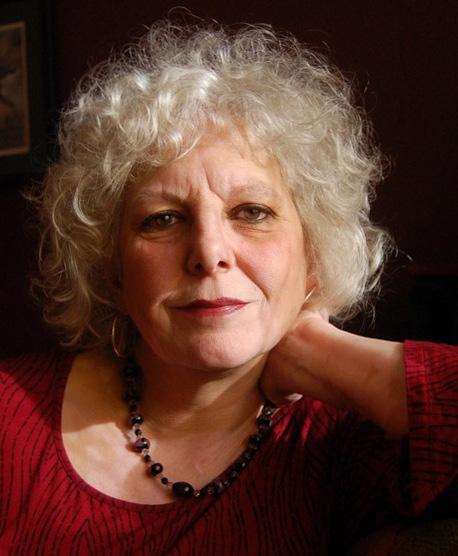
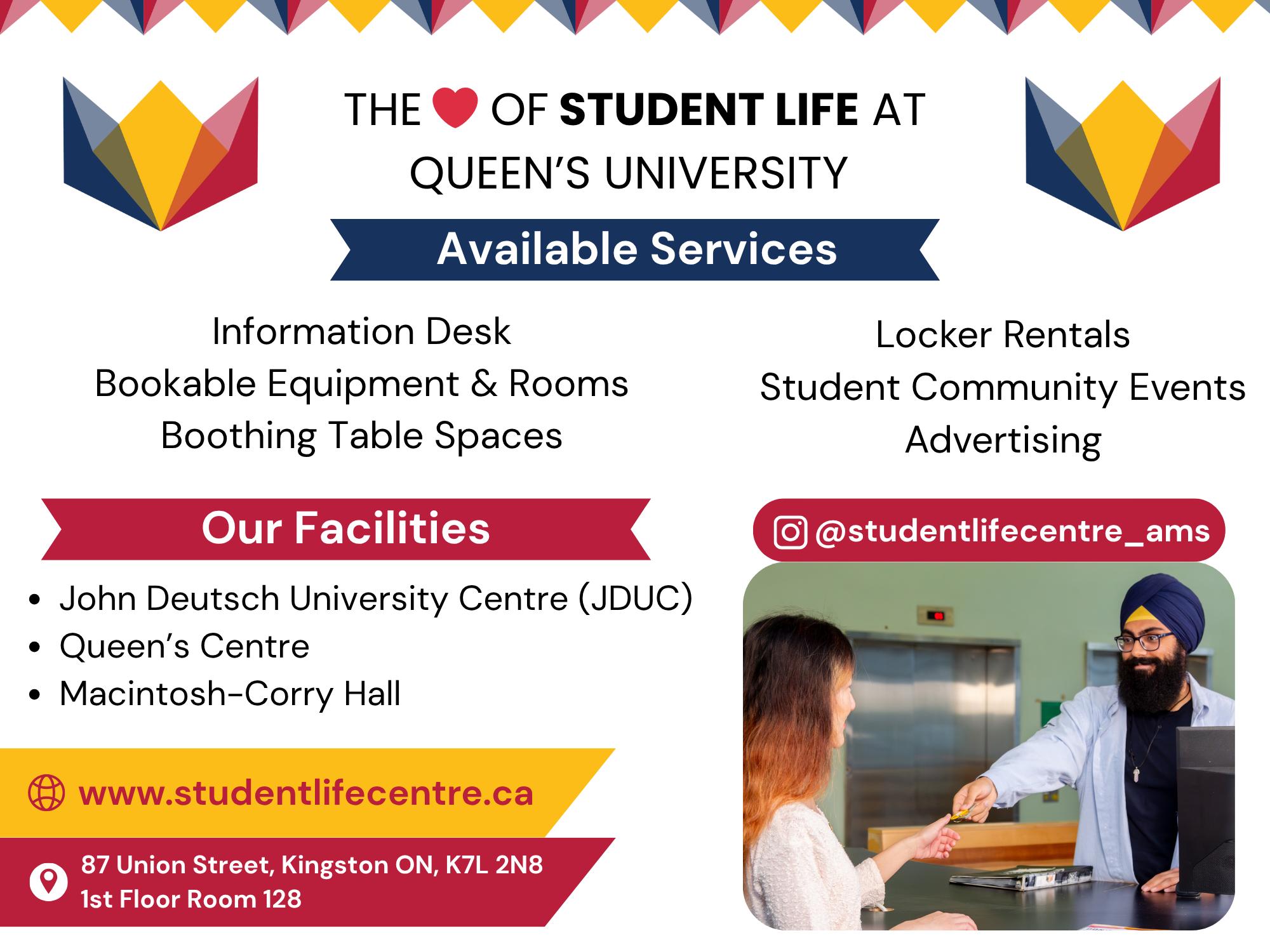
Mercier’s hearing took place on May 30. SUPPLIED BY ADELE MERICER

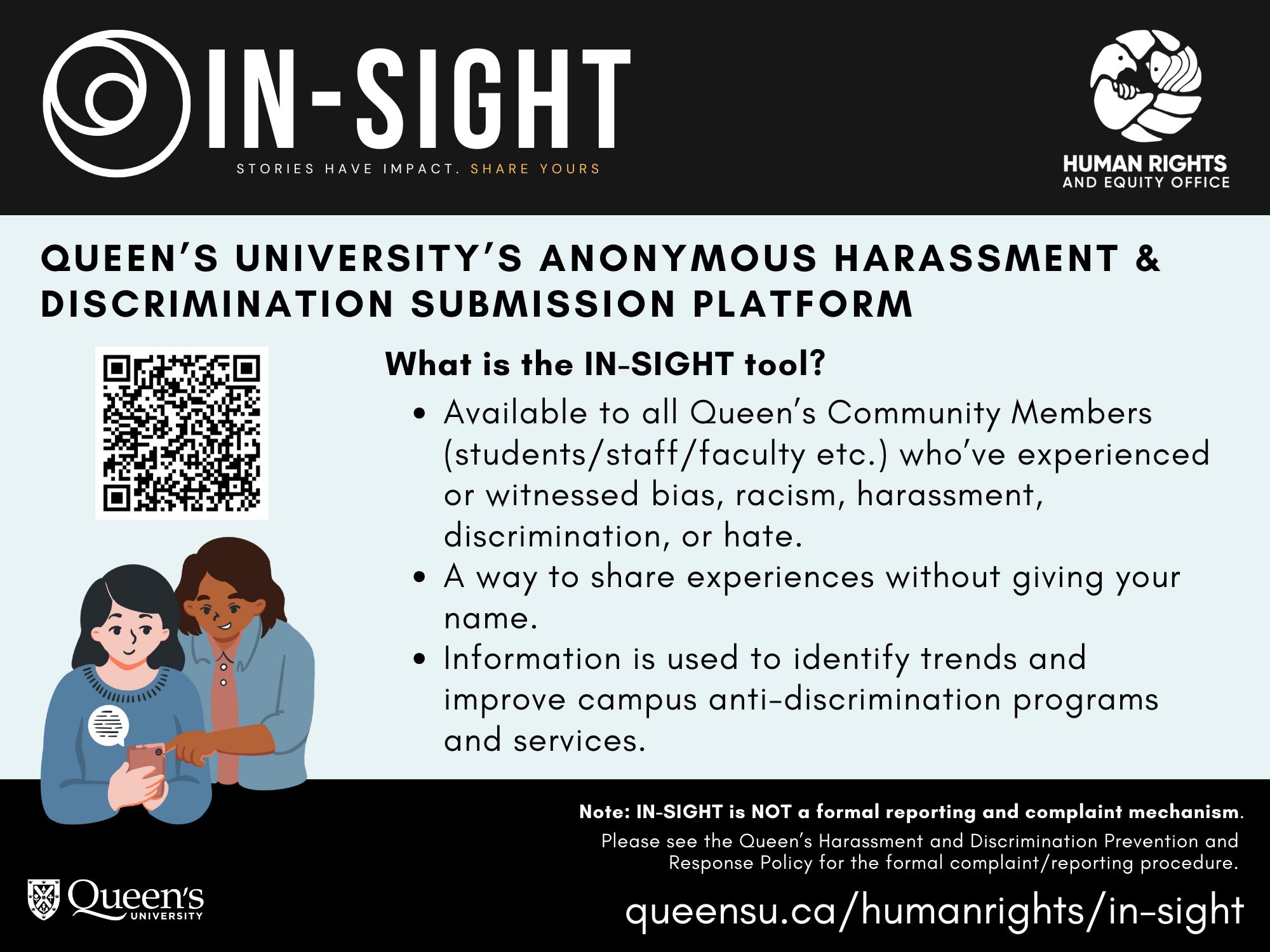

AMS Instagram makes “Cancel Canada Day” post
Alumni critique’s optics of the posts messaging
Jonathan Reilly Senior News Editor
AMS post gets pushback after support for Cancel “Canada” Day movement.
On July 1, the AMS Instagram made a ‘Cancel “Canada” Day’ post, complete with multiple slides of information about the Idle No More movement, a recognition of both Indigenous suffering and their land rights, how to be an ally, and more.
Idle No More is an Indigenous led social movement with various campaigns to raise awareness about Indigenous issues. One of which is Cancel “Canada” Day, a campaign meant to disrupt celebrations and bring attention to past injustices perpetrated against Indigenous people by the Canadian government, along with outlining the injustices ongoing today.
“While some mark ‘Canada Day’ with fireworks and festivities, we recognize the violent colonial history this date represents: genocide, land theft, broken agreements, and ongoing systemic harm toward Indigenous communities,” the AMS wrote in the Instagram caption. “We cannot celebrate nationhood without reckoning with its foundation. There is no pride in genocide.”
Replies in the post’s comments
were mixed, with some in support and others critiquing. One commenter, Henry Jeong, ArtSci ‘19, elaborated on his thoughts in an interview with The Journal.
“I understand where the intentions are coming from, but at the same time, it’s one of difficult optics,” Jeong said. “To ‘cancel’ has a negative connotation. [Instead], how to make Canada Day better means we have things to work on, but it will get better.”
Jeong later explained that, in his view, both reflecting and celebrating don’t have to be separate.
“There is no exclusion between the two of them. They can coexist, and they will build on one another. By celebrating, we’ll be able to reflect, and by reflecting, we’ll be able to celebrate. We’re actually in a very fortunate situation where we are able to do both,” Jeong said.
In an interview with The Journal, President Jana Amer responded to the concerns surrounding the messaging of the post, explaining specifically why they presented it as a ‘Cancel “Canada” Day’ post.
“Cancel “Canada” Day is a campaign that has been led by Idle No More, which is an indigenous movement, which is kind of how the title came about to be and why it’s been that for the past couple of years when it comes to similar posts like this,” Amer said.
While the AMS had referred to this project in the past, including
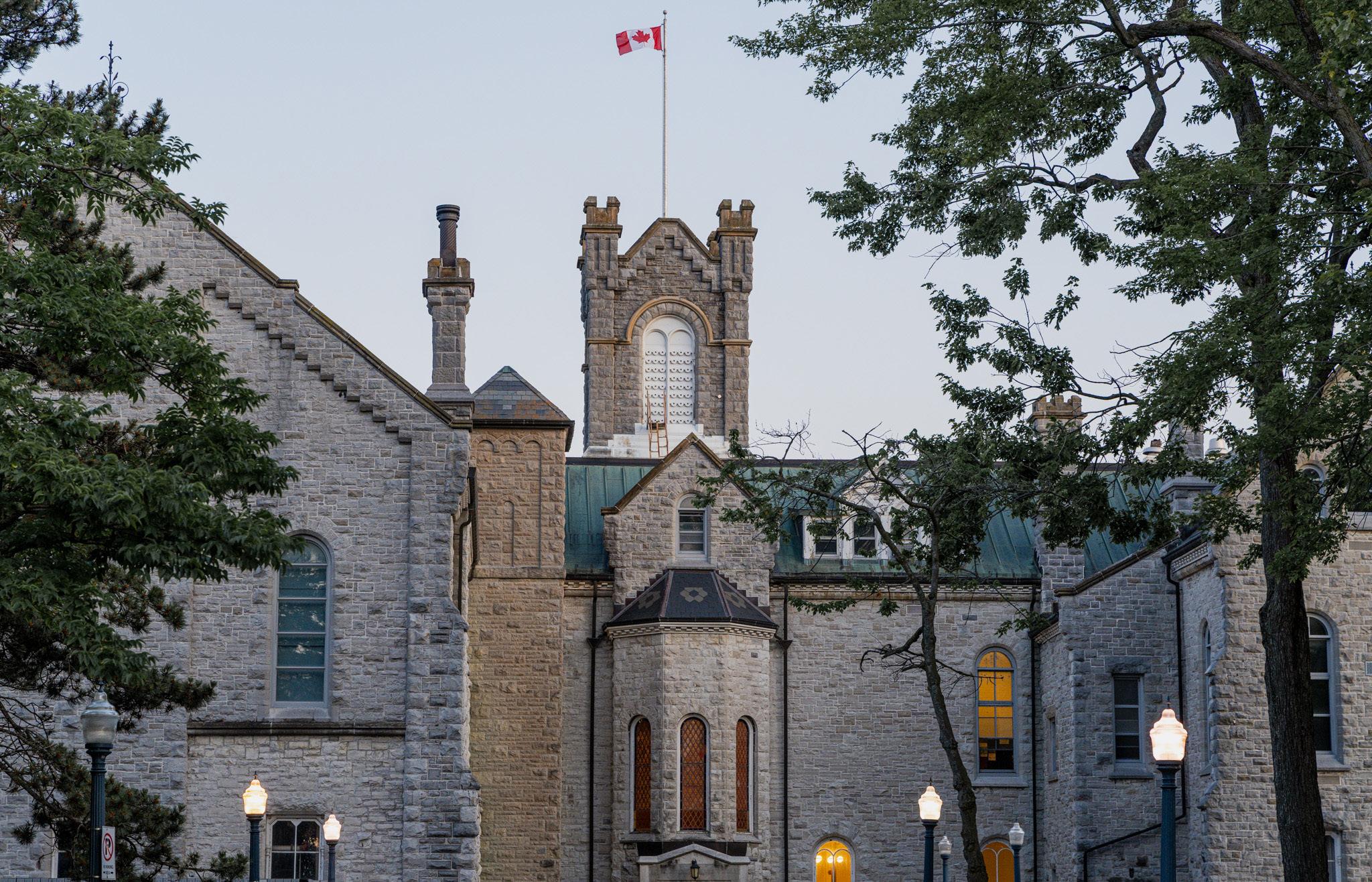
through the reposting of a Queen’s Shift Project post in 2023 and a Cancel Canada post in 2021, these were posted to the Social Issues Commission (SIC) Instagram. This post was the first of its kind on the AMS’s main Instagram.
In the same interview, Vice-President (University Affairs) Alyssa Perisa echoed Amers’ overall sentiment, while also explaining that the SIC’s research on the Idle No More campaign only encouraged the AMS to go forward with the post, explaining it tied back into the AMS’s mandate outlined in the AMS Constitution.
“In our background searching,
Campus station earns national praise for broadcasting
National win highlights just how far CFRC’s mic reaches
Lilly Meechan Assistant News Editor
Campus radio station earns national praise for amplifying Kingston’s local music scene.
Voicing local talent from the corners of Queen’s campus since ‘22, CFRC 101.9 FM—tucked behind lecture halls at 62 Fifth Field Company Lane—was awarded the Local Talent Development Award by the National Campus and Community Radio Association (NCRA) on June 20.
The award was presented during the NCRA’s annual gala in Nanaimo, B.C. CFRC was selected from more than 100 campus and community stations in Canada, recognized for its 2024 programming that featured daily broadcasts of new local music, live performances, artist interviews, and paid opportunities for local musicians.
For Dinah Jansen, the executive director of CFRC 101.9, national recognition positions the station as a leader in amplifying emerging artists, reflecting CFRC’s long-standing commitment to supporting the local music scene.
“This [the national recognition] win is huge for the station but also Queen’s and Kingston musicians. National recognition places us as a leader in local
local talent
talent development by setting an example that other radio stations country-wide can follow,” Jansen wrote in a statement to The Journal.
Jansen pointed to CFRC’s Airwave YGK DJ and Musicians-in-Residence programs, the weekly airing of Release Radars in partnership with the Kingston Music Office, live sessions, and daily local concert promotions as key factors in the station’s win. She expressed that these initiatives are designed to foster direct, community-driven connections between artists and listeners.
“We’re constantly creating opportunities for student and community musicians to share their music on air, perform live in our studio, and talk about their work,” she wrote. “It’s a way to connect with audiences in a more personal, meaningful way than streaming platforms can offer.”
According to Jansen, CFRC submitted a video acceptance speech for the NCRA’s national gala in Nanaimo, B.C., choosing not to attend in person in order to allocate funds towards the station’s ongoing programming.
In a media release, CFRC thanked all the volunteers who have contributed to and continue to support the station through volunteer work.
“We are so very proud,” they wrote. “Thank you to our staff, volunteers and interns whose work made our projects and this significant national recognition possible. We are also incredibly grateful to
the many musicians, artists and facilitators who have joined us at CFRC to bring our community creative learning opportunities, informative and uplifting discussion, and of course, outstanding live, local music.”
Among those volunteers was Madison Taylor, ArtSci ’25, who graduated this past summer and co-hosted two CFRC programs: ‘Between Friends’ and the ‘Indie Wake-Up Call’. In an interview with The Journal, Taylor explained the award was both a personal and collective validation.
“It just reflects all the hard work that the volunteers put in and how involved the station is with the local music community,” she said. “Even though I’m not part of it anymore, it was such a special part of my university experience.”
Taylor also reflected on the broader meaning of the award, noting that it isn’t just a win for Queen’s students but for the Kingston community at large.
“It’s not just Queen’s, it’s campus and community radio. It shows the hard work of students, volunteers, and local musicians, but also highlights the Kingston community that’s such a big part of the station as well.”
Looking to the year ahead, Jansen touched on how CFRC is launching Club Takeovers, a new initiative allowing student groups to host an hour of radio featuring music, event promotion, and club information. The program is open to all Queen’s clubs, including those not formally ratified, and includes curated playlists and social media promotion.
we found that they [Idle No More] call on people for peaceful revolution to honor what Jana mentioned, Indigenous sovereignty, and we want to be a part of that because in the AMS mandate we want to uphold those principles of Indigenization and create an opportunity for students to learn and provide them with education regarding social issues,” Perisa said.
In response to the critique of being able to both celebrate and recognize Canada’s history, Amer explained that a main part of their job is to tell the untold stories, and this
post was meant to present a different perspective of Canada Day amongst the usual celebratory posts on July 1. “During Canada Day, we get to see so many posts celebrating and looking at the beauty of Canada and talking about why Canada is so awesome, we get to hear about that. Not a lot of people remember to recognize the flip side of it and that’s kind of where we were trying to also bring in some of that balance when it comes to having conversations around Canadian sovereignty,” Amer said.
OntariO gOvernment allOcates $55.8 milliOn tOwards new
teachers
Faculty of Education set to receive a portion of the provincial investment
Yael Rusonik & Kaliyha Dennis Assistant News Editors
Following concerns surrounding teacher shortages, the Ontario government has made a sevenfigure investment.
13 Ontario universities offering Bachelor of Education degrees—including Queen’s—are set to receive a $55.8 million provincial investment aimed at training 2,600 new teachers by 2027. The investment was announced on June 20 at Duncan McArthur Hall by the Ontario Minister of Colleges, Universities, Research Excellence and Security, Nolan Quinn. University Rector Niki
Boytchuk-Hale and the former Dean of the Faculty of Education, Rebecca Luce-Kapler, who was succeeded by Amy Burns as Dean shortly after the announcement on July 1 were also in attendance.
“With this early intervention, our government is proactively addressing teacher shortages and giving more postsecondary students the opportunity to become future educators,” Quinn said during the announcement.
“Access to qualified teachers is critical for students to achieve academically and succeed in the jobs of tomorrow.”
According to a report from the Council of Ontario Directors of Education, which represents the heads of Ontario’s public
school boards, 70 per cent of elementary schools and 74 per cent of secondary schools are currently experiencing daily or weekly shortages of qualified teachers, which the report constitutes a “crisis” in certain parts of Ontario.
Quinn specified that this investment will prioritize teacher-education programs that produce graduates qualified to teach in French, Indigenous, rural and Northern classrooms, where Ontario is seeing some of the most significant shortages, according to the report.
The funding will also support the expansion of condensed Bachelor of Education programs, which are accelerated semesters, from May until Aug. of the next year, allowing candidates to complete their training in about a year, rather than the traditional two academic years.
According to The Kingstonist, before this investment, the teaching program at Queen’s had been capped at 792 full-time equivalent students. This was due to limitations imposed by the province’s funded enrolment framework, which restricts how many teacher candidates each university can admit.
The post was made on July 1.
PHOTO BY JASHAN DUA
FEATURES
Queen’s first-years play roommate
roulette and don’t always walk away a winner
Students express frustration over roommate selection system
Eva Sheahan Features Editor
With no roommate-matching system, Queen’s assigns first-years at random—turning the first year ‘roomie’ experience into a game of chance.
Every year in early September, the intersection of Collingwood and Earl is filled with lines of parents and students hauling boxes from their cars, all on the same mission: to set their child free to fly the coop straight into independence at Victoria ‘Vic’ Hall—Queen’s most notorious party residence.
When it comes to first year dormitories, roommates are a standard part of the residence experience. However, Queen’s lack of a roommate questionnaire or matching system prior to roommate assignment has proven problematic for some students.
Roommates are a standard part of the first-year experience. Unlike other Canadian universities such as Carleton University and St. Francis Xavier University, Queen’s doesn’t have a matching system during the roommate pairing process, other than allowing students to preselect a specific person before the term begins if they so desire.
Since Queen’s doesn’t use a matching system, students who don’t pre-select a roommate are often paired with complete strangers whose lifestyles may clash. The process leaves first-years with two choices: scramble to find someone in advance or take a gamble on living with someone they know nothing about.
For some students like Ava Lambe, ArtSci ’28, this unpredictable process didn’t end badly. Lambe tried to request a specific roommate, but when the friend she chose didn’t get accepted into residence, she wasn’t asked any further questions and was placed instead with two randomly selected roommates in a triple room.
Despite the initial setback, Lambe explained in an interview with The Journal, she got along well with both her roommates and plans to continue living with one of her first-year roommates, who has now become one of her best friends.
Even though Lambe and her two randomly selected roommates shared an overall positive experience, Lambe was quite surprised
by the roommate selection process at Queen’s.
“The roommate selection process seemed odd. I requested a specific roommate, and she didn’t get accepted into residence and then that was it,” Lambe said. “I wasn’t asked to provide any information or interests to the school, unlike my friends at Carleton. I chose a dorm and was just placed with people.”
Due to the absence of a matching service, Queen’s has tried to mitigate roommate conflict by mandating roommates to create Roommate Agreements—written contracts with rules and boundaries outlined between roommates for the academic year. The agreements are put in place to deal with roommate difficulties and set some ground rules before the fall term begins.
“We provided a structured process to help students navigate roommate concerns. All roommates complete a Roommate Agreement at the start of the year to discuss expectations around shared space,” Queen’s Housing and Ancillary Services wrote in a statement to The Journal. “If a conflict arises, we encourage students to revisit their agreement and speak to their Don, and where necessary, a Residence Life coordinator who can help mediate conversations.”
While Queen’s encourages students to complete roommate agreements after move-in, it’s a relatively uncommon practice among Canadian universities to forego a roommate matching system—a choice some students express isn’t necessarily a proper solution. For example, Western University assigns roommates based on lifestyle compatibility, with questions about sleep schedules, study habits, and cleanliness.
Other Canadian universities, such as the University of Toronto, University of Alberta, and University of Calgary, use StarRez—a platform that streamlines roommate matching through surveys, self-selection tools, and automated pairing. Extending South of the boarder, Baylor University in Texas reported a 62 per cent higher match rate after incorporating lifestyle questions into their process.
For some students, even the simple question of sleep schedules would’ve gone a long way .
Ellie Sheppard, ArtSci ’26, respected and admired her first-year roommate, but she believes both their experiences would’ve improved had they completed a survey or roommate pairing questionnaire beforehand. Despite getting along well, the two had drastically different sleeping schedules, which meant they were often using the room
for different purposes at opposite times of the day.
“I woke up a lot earlier than my roommate and because of this, I felt like I couldn’t get up and do my normal morning routine, because I didn’t want to wake her up. It threw me off because I couldn’t get ready properly or do things like blow dry my hair,” Sheppard said in an interview with The Journal. “I often waited around in the dark until she woke up and I could begin using the room normally without worrying about light or noise.”
For Sheppard, lifestyle-based questionnaire—espically one focused on sleep—would’ve made first-year a lot smoother for everyone involved including her hair.
“I definitely recommend that Queen’s uses questionnaires to pair roommates. The simple question of “are you a night owl” would’ve gone a long way for me in first-year, because my roommate and I were completely opposite in terms of sleep schedules,” Sheppard said.
While sleep can already be difficult in noisy residences like Vic Hall, some students like Renee Esco, ArtSci ’26, found themselves especially frustrated by roommates who regularly invite their significant others into their shared rooms to spend the night.
In Esco’s triple dorm room in Vic Hall, one of her roommates returned from winter break with her boyfriend—who ended up living in their shared space for almost a month.
While opinions surrounding overnight guests might not be categorized as a lifestyle choice, Esco explains that her and her roommates’ opposing perspectives reflect contrasting personal boundaries and expectations on room sharing that could’ve been rooted out through surveys and questionnaires.
The uninvited presence of a man in an all-female room led to some awkward moments for Esco—including when her father arrived to help her move back in after winter break and found her roommate’s boyfriend alone in the room, without Esco’s knowledge. “When I moved back from winter break and I was moving stuff into my room, there was just a man in my room. I didn’t know how to explain that to my father,” Esco said in an interview with The Journal
Because of the open layout
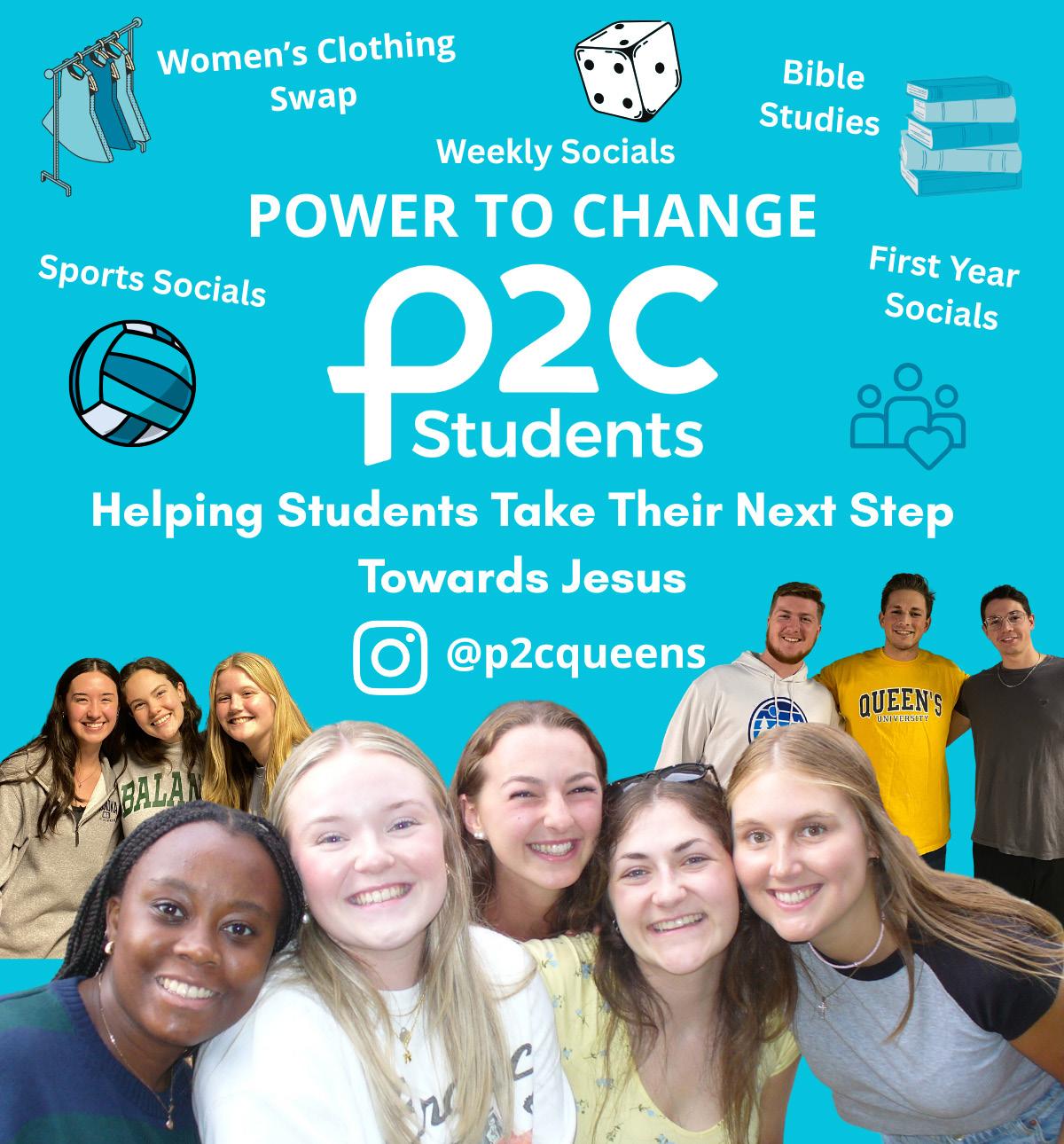
of triple rooms, Esco had virtually no privacy while getting ready—despite a man she was uncomfortable around being present every night.
Vic Hall triple rooms cost $16,406.80 per roommate, according to Queen’s residence webpage, something Esco felt wasn’t worth the price if she was uncomfortable in the space. “If we’re paying this much money for a room, we want to feel safe. It got to a point where I couldn’t even change in my own room,” she said.
After Esco and one roommate raised concerns to the roommate in question about the lack of privacy caused by her boyfriend staying in the room, no changes were made, and they ultimately escalated the issue to their floor Don and Residence Life staff.
“[Having her boyfriend there all the time] was definitely a privacy issue and we didn’t establish proper boundaries,” Esco said. The roommate was eventually removed due to ongoing concerns, which reflected significant differences in personalities and lifestyles.
However, not all randomly assigned roommate stories ended in disaster. For students like Charlotte Ocon, ConEd ’27, the random draw turned out to be a perfect match.
Getting to know her firstyear roommates was one of the highlights of Ocon’s first-year at Queen’s. Placed in a triple room in Leonard Hall—affectionately known as ‘Lenny’—she was paired with two strangers who quickly became close friends.
“We didn’t have a single argument over the course of the year, which I feel is pretty rare,”
“We were all
and clean people so there were no arguments there. But I think most importantly, we had similar expectations for what we wanted our first year to be.”
Ocon has continued to live with her first-year roommate ever since. “I got really lucky because both roommates were great and we all got along for the entire year. One of them actually became my housemate for my entire time at Queen’s and one of my best friends, so it really worked out for me,” she said.
Their success as a roommate trio, Ocon says, came down shared expectations and a mutual understanding of what they each wanted out of their first-year at university. “We were all very social, so we all were open to having people over to our room or going out together and having fun,” Ocon said.
In terms of communication, randomly selected roommates worked in Ocon’s favour, placing the perfect amount of emotional distance to handle boundaries with confidence and respect. “I feel like randomly selected roommates were the best choice for me,” she said. “Even though I know not everyone gets as lucky as I did, it’s still what I recommend because you learn so much about communication.” Continued online at www.queensjournal.ca
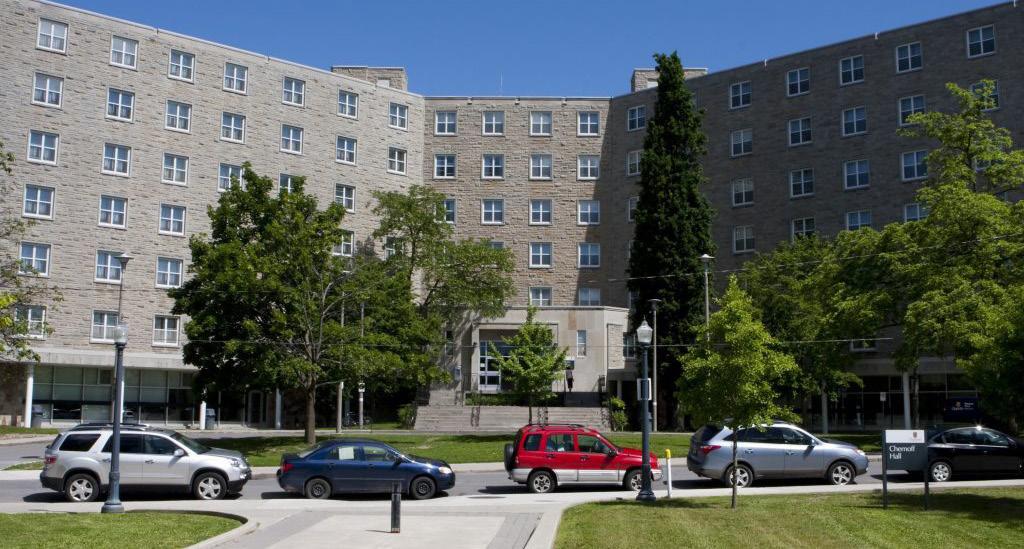
Ocon said in an interview with The Journal.
tidy
Roommate selection took place in June for the 2025 school PHOTO BY QUEEN’S UNIVERSITY
How to navigate student government at Queen’s 101
Breaking down the organizational structure of the AMS and SGPS
Sarah Adams Editor in Chief
Queen’s student government shapes campus life—but understanding how it works is another story.
Similar to high school student councils, Queen’s has its| student government system with distinct structures, voting processes, and advocacy branches—just at on a much larger scale. Whether a first-year or a returning student, breaking down the organizational structure and operations of student government at Queen’s helps students access available services and support.
Queen’s has two central student governments that serve the student body: the Alma Mater Society (AMS) for undergraduates and the Society of Graduate and Professional Students (SGPS). Additionally, Queen’s has an elected Rector, who serves as a bridge between students and the University’s senior administration.
Undergraduate student governance
The AMS, an apolitical student government for undergraduates at Queen’s, and works to represent students, speak up for their needs, and offer services—as mandated by the AMS constitution. The AMS is governed by two main branches: Assembly and the Board of Directors.
Assembly is composed of eight elected student representatives from member faculty societies, such as the faculty of Arts and Science, the Smith School of Engineering, as well as the AMS executive team, all of whom attend and vote. The Assembly’s job is to talk about and vote on student issues, like student fees, what the AMS should advocate for on behalf of students, and changes to make the AMS run mire efficiently, such as restructuring commissions and changing policy.
Twice a year, there’s also a General Assembly where all undergraduate students get to vote on decisions. from club referendums to changes in policy. As of July, the AMS hasn’t yet announced the dates for upcoming Assembly meetings and all summer sessions have been closed to all non-voting members.
While the Assembly debates policy and advocacy positions, the Board of Directors operates in the background, making decisions on strategy, finances, and staff management.
According to the Board’s webpage, the group is responsible for long-term planning, budget oversight, and ensuring financial sustainability. It also oversees all employment-related policies for AMS staff, including pay and workplace conditions.
The Board is made up of 13 voting members: six student directors, four non-student directors, and three members of the AMS Executive. AMS General Manager, Lyndon Smith, also sits on the Board in an ex-officio role.
Each year, the AMS Assembly elects a Chair, and Board members internally elect a Vice-Chair.TheChairalsositsonAMS Assembly in a non-voting, ex-officio, role, helping bridge communication between the Board and the student government’s broader decisionmaking body.
While the Board focuses on long-term planning and internal operations, the AMS Judicial System handles conflict resolution and accountability within the student body.
The AMS Judicial System is made up of two parts: the Judicial Affairs Office, which investigates complaints, and the Judicial Committee (JCOMM), which makes decisions. Together, they handle internal disputes within the AMS, including misconduct by student clubs, breaches of policy, and conflicts between students involved in student government.
Rooted in principles of restorative justice, procedural fairness, and peer-led, nonadversarial decision-making, the system aims to resolve issues through dialogue rather than punishment, according to their webpage. The Judicial System is guided by the AMS Judicial Policy and Appointments Policy. Students can access the system to file or respond to complaints involving other students, AMS services, or clubs.
Alongside these governance and accountability structures, the AMS Executive team provides full-time leadership to oversee the day-to-day operations and student advocacy.
The AMS Executive, elected each winter, is made up of three full-time student leaders who assume office on May 1—with students now running in a de-slated election, meaning students run independently rather than in a slated group of three for President, Vice-President (Operations), and Vice-President (University Affairs).
The President acts as the chief spokesperson and oversees all AMS functions. The Vice-President (Operations) manages corporate services and budgeting, while the Vice-President (University Affairs) handles commissions and student advocacy portfolios.
This year’s executive team includes Jana Amer as president, Elena Nurzynski as vice-president (Operations), and Alyssa Perisa as vice-president (university affairs).
Under the main jurisdiction of Amer are the AMS Offices, which provide administrative, operational, and governance support across the AMS and the student body. Each office is led by a staff member or coordinator and often works behind the scenes to facilitate AMS services and programming.
The Marketing and Communications (MARCOMS)
Office promotes AMS services and events, with Marketing handling branding and outreach, and Communications managing PR, updates, and official statements. Internal governance is overseen by the Internal Affairs Office, which handles elections, policy, and disciplinary matters.
Human Resources manages hiring and training, while the IT Office maintains AMS’s digital infrastructure. Orientation planning is led by the Orientation Roundtable (ORT) Office, which coordinates with student leaders to welcome incoming students. Lastly, the Student Life Centre (SLC) office oversees the SLC, managing bookable spaces, event infrastructure, and resources across campus to support AMS services, clubs, student groups, and campus initiatives.
The broader scope of AMS services falls under the oversight of VP (Operations) Nurzynski, who manages a range of student-run programs and initiatives. AMS services are largely student-run, offering undergraduates paid positions managing everything from coffee shops to safety programs and governance bodies.
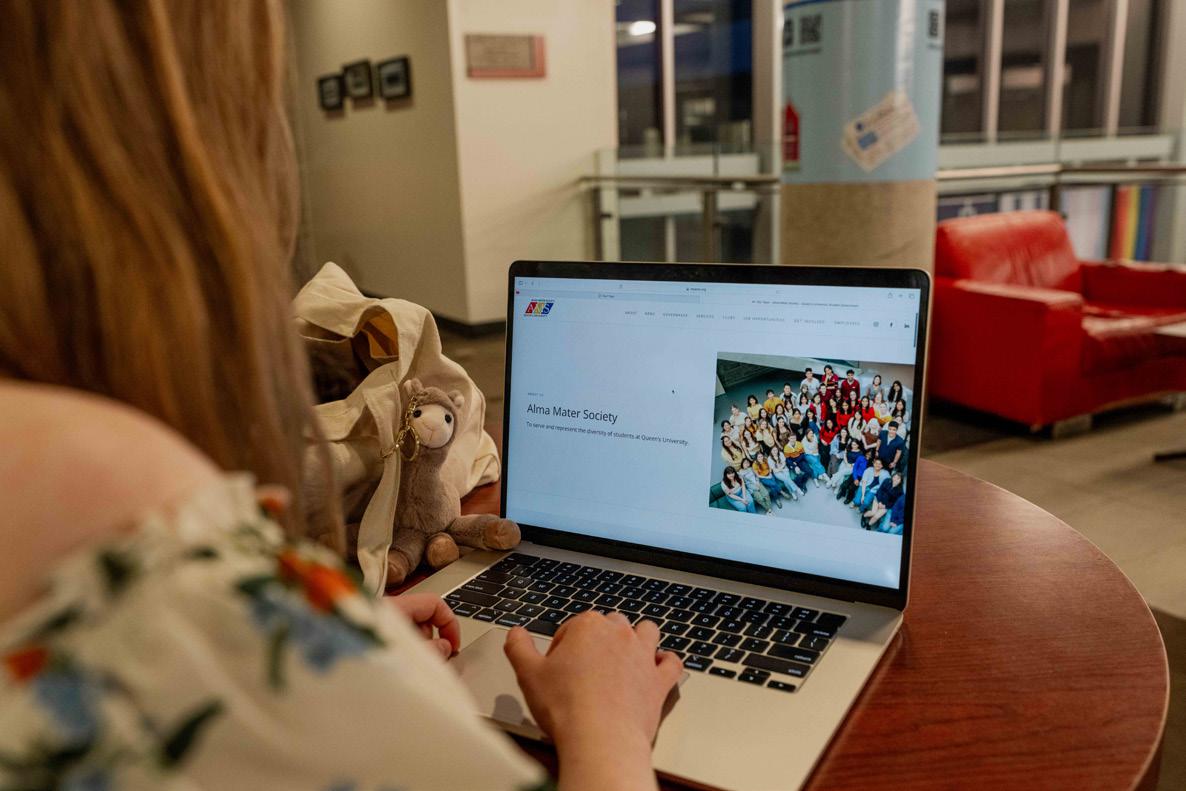
AMS services include Walkhome, the Peer Support Centre, the Tricolour Outlet, the AMS Foodbank, Common Ground Coffee House (COGRO), the Student Life Centre (SLC), the Media Centre, Queen’s StuCons, the Housing Resource Centre, the Academic Affairs Centre, and well of course, The Queen’s Journal who maintains editorial autonomy independent from the AMS.
Students have access to AMS services funded by student activity fees, also known as Ancillary Fees, which consist of both mandatory and optional fees included in undergraduate tuition each year. Services go beyond the nine operational organizations and also include student benefit programs. In the 2024-25 academic year, the mandatory
AMS fees undergraduate students were $841.55, with an additional $103.97 for the optional Health & Dental plan and other optional fees, according to an AMS Ancillary Fee Opt-In Form.
Among the services funded by student fees is the BUS-It program, which gives undergraduate students unlimited access to Kingston Transit with their student card during the academic year. Another is the AMS Health and Dental Plan, which provides extended coverage for prescriptions, dental care, and other health services not covered by OHIP or UHIP, according to the AMS webpage.
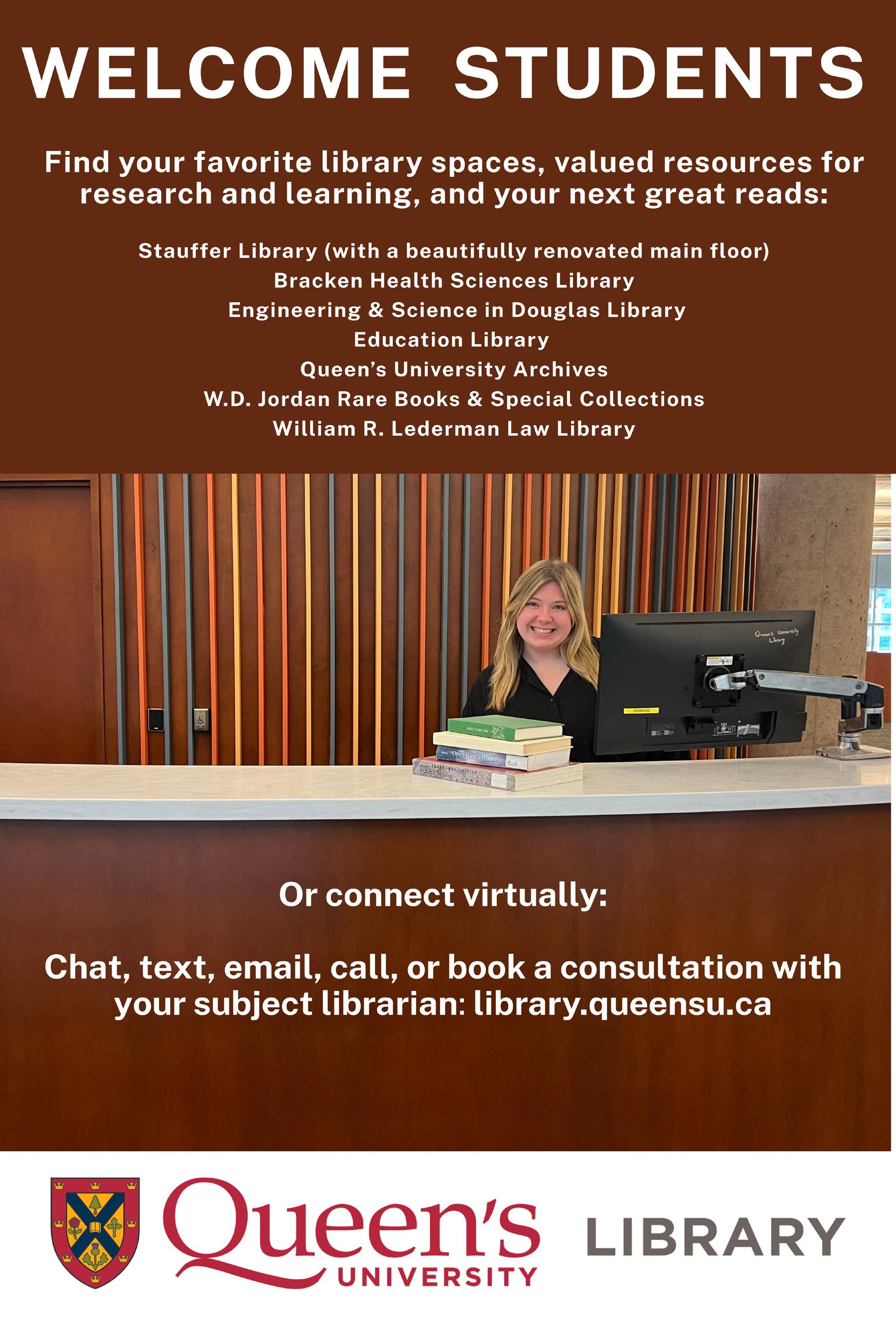
PHOTO BY JASHAN DUA
A guide to help students understand governing bodies affecting them.
The Idaho murders weren’t a true crime puzzle; they were femicide
Journal Editorial Board
This article discusses gender based violence and may be triggering for some readers.
What happened in Moscow, Idaho, was both a tragedy and a manifestation of a terrifying and growing ideology.
On July 29, the man who brutally murdered four Idaho students was jailed for life without parole. Bryan Kohberger pled guilty for the violent deaths of students Ethan Chapin, Kaylee Goncalves, Madison Mogen, and Xana Kernodle in their offcampus home in Moscow, Idaho in 2022. Kohberger remained silent during the sentencing and refused to provide a motive, but the attacks appear to be motivated by a clear hatred towards women.
In an age of increased violence towards women, rhetoric about Kohberger’s sentencing should focus less on the crime and more on the lives that were lost.
The sentencing served to detain a violent criminal, but must continue to steer clear of glorifying or sensationalizing what took place in Moscow. At a time when internet sleuths and conspiracy theorists, cases like Kohberger’s tend to gain traction on social media. Although most people following the case are appalled by Kohberger and his actions, the obsessive and frenzied attention given to cases like this often causes more harm than good.
This obsessive attention can blur the line between justice and entertainment.
Internet followers of true crime often center the perpetrator, which
sidelines the victims and broader social narratives.
In extreme cases, online communities even romanticize criminals, creating a cult following around them—something this case was no exception to. Kohberger received dozens of fan letters while detained at Latah County Jail, ultimately shifting the focus from accountability to speculation and spectacle risks turning violence against women into a form of pop culture.
Internet subcultures often give rise to harmful ideologies, such as misogyny or more violent forms of hatred towards women. Kohberger was believed to be behind the Pappa Roger Facebook profile, which tried to throw conspiracy theorists off his case in multiple Facebook groups—highlighting how digital spaces can be manipulated to distort public understanding and hinder justice.
The name ‘Pappa Roger’ is likely in reference to Elliot Roger, who killed six people and injured 14 more in a stabbing and shooting spree in Isla Vista, California. Roger then published a 141-page document detailing his intense loathing of women.
Whether it’s Pappa Roger, or Elliot Roger, it’s clear how incels—involuntary celibates—are inspired by each other as they continue to orchestrate brutal crimes against women.
Femicide, the killing of a woman or girl on account of her gender, is
not a random or isolated incident—and most importantly is not just limited to what took place in Idaho. Kingston experienced its first declared case of femicide on May 16th, when a 25-year-old woman was found inside her home with multiple injuries and later died in the hospital.
The Brian Kohberger case was a particularly shocking incident, but it is also a part of a larger movement that glorifies violence against women. Internet rhetoric should avoid sensationalizing Kohberger’s actions and focus on the victims and the lives they will never be able to live out.
Chapin, Goncalves, Kernodle, and Mogen were young students whose friends and family speak incredibly highly of them. Many of the families’ testimonies at the sentencing focused on the lives that were taken away, not on Kohberger, which is exactly how it should have gone.
As the media divulges the outcomes of this particular case, followers must resist the urge to elevate Kohberger and instead honour the memory of the victims. Followers of the case should disengage with content focused on Kohberger, and lean more about Chapin, Goncalves, Kernodle, and Mogen. In an age where online communities fuel misogyny and amplify dangerous ideologies, everyone has a responsibility to be careful about how they engage with tragedy.

First-years are missing out on opportunities— and it’s not their Fault
Jonathan Reilly Senior News Editor
Opportunities for Queen’s students within the University and the Alma Mater Society (AMS) are plentiful, yet the messaging about such roles isn’t.
Having been minimally involved in extracurriculars during high school, I entered university with a sense of naivety around the opportunities available to me—wrongly assuming that the university life mirrored high school, only consisting of harder classes and a few extra clubs.
I couldn’t have been further from the truth.
At Queen’s, the leap from high school isn’t just academic—it’s a whole new world of opportunity. The kinds of hands-on experiences available are miles beyond what most students encounter before university, but without clear guidance and early outreach, many first-years don’t even know these doors exist—let alone how to open them.
During my undergrad, I’ve met students helping design the very courses they have just taken, or spending their summers conducting research alongside professors. It’s impactful, interesting, work often only landed after a couple years of undergraduate education.
Within the AMS, there are many student jobs that provide upper managerial experience to students, allowing them to run entire coffeeshops or take charge of commissions that oversee multiple projects, gaining invaluable experience in leadership that usually wouldn’t be possible until late in a professional career.
As the Senior News Editor at The Journal, I’m essentially doing the job of a working journalist— while also learning how to manage and lead a team of three assistants. Prior to joining, I had never laid my finger on journalism. Now, I feel confident I could build a career in the field if I choose.
Continued online at www.queensjournal.ca
Bill 33 fails Ontario students, threatening campus services, equity, and autonomy
Journal Editorial Board
From the AMS Food Bank to the Peer Support Centre to the Sexual Health and Resource Centre (SHRC), Bill 33 jeopardizes essential student services, and equity measures in the admissions process.
Bill 33—the Supporting Children and Students Act—was introduced to the legislative assembly of Ontario on May 29 and is currently at its second reading. Section three, the Colleges and Universities Act, proposes sweeping changes for Ontario universities, including assessing admissions based on merit and allowing government regulation over student fees. These provisions are threatening for student-run organizations such as the AMS and the Society of Graduate and Professional Students (SGPS), which rely on student fees to support a variety of essential services— something that comes as a concerning symptom of government overreach in post-secondary institutions.
The AMS and SGPS are essential to the running of undergraduate and graduate student services such as Walkhome, the Peer Support Center, the Food Bank, Without these services, groups such as women and food-insecure students will face additional barriers to postsecondary. In Canada, 48 per cent of women are scared to walk alone at night, and 38 per cent of postsecondary students in Ontario are food insecure. Without mandatory fees, it is unlikely
many students will support these services, which to some, are essential.
Just as student services address pressing safety and equity concerns, independent student journalism plays a critical role in campus accountability—both rely on student fees to function.
The Journal generates revenue from both AMS and SGPS student activity fees, without which publication operations would seriously be comprised. Reducing the University’s jurisdiction over student fees allocation jeopardizes vital elements of campus governance, including independent student journalism holding institutions and student government accountable to their actions.
In addition to monitoring student fees, Bill 33 emphasizes a merit-based admissions process, which would only make post-secondary education increasingly inaccessible to students from marginalized backgrounds. Requiring postsecondary institutions to assess admissions based on merit and publish their admissions criteria risks important equity, diversity, and inclusion measures in the admissions process.
It’s no secret that those from marginalized backgrounds face barriers to accessing postsecondary education. Requiring that admissions are based solely on merit neglects students who grew up with less access to education, ultimately enforcing the stereotype of post-secondary
institutions as aristocratic and elitist.
Bill 33 comes as a clear indication the lack of support for education from the Ford administration. The provincial government has already faced criticism for underfunding education, despite an increase in overall spending. Kingston and Islands Member of Provincial Parliament, Ted Hsu, warned The Kingston Whig Standard that Bill 33 is aligned with the Ford government’s overall neglect of university funding.
Concerningly, this decrease in support for academia follows the growing trend of antiintellectualism in response to the populist movement taking root in North America. From Donald Trump’s reelection, to the Freedom Convoy and Pierre Poilievre’s popularity in Canada, it’s clear that populism in North America is on the rise—and with it comes a concerning movement away from academia and towards a society that’s positioned against intellectuals.
The climate of distrust towards academic institutions makes the overreaching elements of Bill 33 and ow
they will be applied all the more troubling.
The government-regulated admissions and fee structures outlined in Bill 33 are worryingly vague, raising red flags about how this legislation would be implemented. Assessing applicants based on “merit” does little to define what merit is, while posing a threat to equity-deserving students. Similarly, Section 21.1 of the Bill authorizes the Lieutenant Governor in Council to determine what student fees are mandatory. Without clear guidelines on what this mandate is, many student services will be left unsure if they will be able to
fund their operations while groups on campus will be left without essential services.
Under the guise of accountability, Bill 33 threatens the autonomy of post-secondary institutions. The Bill’s vague language around meritbased admissions and fee regulation opens the door to policies that jeopardize the needs of equity-deserving students.
As public trust in academia is increasingly undermined by populist rhetoric, Bill 33 sets a dangerous precedent for government interference in post-secondary education.
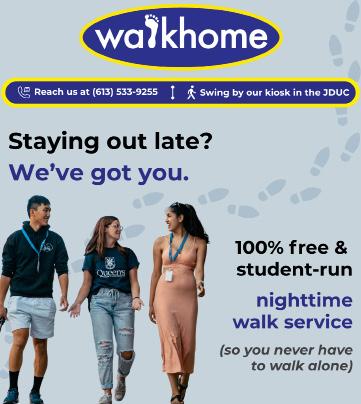


<BIZ-SCI-TECH>
WELL 100: Psychology professors launch new course to support first-year wellbeing
“Be brave enough to fail. Failure is a part of success,” associate professor says
Katarina Krivokapic Business, Science & Technology Editor
First-year students don’t have to navigate the unfamiliarity of university life alone; the course is designed to build mental resilience and support academic success, according to professors.
WELL 100, a new course introduced by the Department of Psychology, has introduced and designed by Associate Professors Tim Salomons and Jeremy Stewart aims at helping first-year students navigate the transition to postsecondary life, through evidence-based strategies for supporting mental wellbeing during a period of change.
“University is a time of transition,” Salomons said in an interview with The Journal “Maybe [students] were excelling in high school without a lot of effort, and suddenly they’re surrounded by people who are just as smart as them, and it can be a difficult adjustment.”
Both researchers recognize that university years are a vulnerable period during which mental health challenges may begin to emerge, and as such wanted to have a proactive solution to mental health, one which includes teaching students how to navigate this unfamiliar phase.
To navigate well being, WELL 100 takes a broad, preventative approach. Students will learn about topics such as sleep, time management, mindfulness, and social connection through readings and modules. Practical participation in course activities will account for half of the grade.
“The drive for the course was really that we want a more proactive solution to mental health”, Salomons said. “If
we can make [the adjustment to university] more manageable by teaching [students] some simple strategies for coping with student life, then that’s a proactive and, we hope, useful response to student mental health.”
Meghan Norris, associate professor and undergraduate chair in the Department of Psychology, noted that while students often talk about academic stress, other challenges like loneliness or homesickness are less frequently discussed.
“Students might readily ask how to find a classroom, but it’s much harder to open up about missing their pets,” Norris said in an interview with The Journal. “Those quieter moments can sometimes be a bigger struggle.”
A goal of the course is to increase students’ awareness of campus support services and reduce the stigma around using them. Through partnerships with Student Wellness Services and Student Academic Success Services, WELL 100 will introduce students to resources many don’t realize are available to them before they reach a point of crisis.
“A goal that has emerged for us is to make students aware of [wellness] services. They’re not just for people who are in crisis; they’re for anybody who just wants to get more out of university,” Salomons said.
With 100 initial seats and offered only in the fall semester, WELL 100 filled quickly.
According to Norris, however, the department plans to scale up the course in future years to make it more widely accessible.
Reflecting on their own experiences as students, the professors spoke about the importance of planning, facing failure, and finding community. “Be brave enough to fail. Failure is a part of success.”
Norris added in an interview with The Journal
New NutritioN labels to flag uNhealthy packaged foods by 2026
Nutrition label’s impact on student choices may vary, Queen’s dietitian says
Katarina Krivokapic Business, Science & Technology Editor
New front-of-package warning labels are coming to Canadian grocery stores by 2026.
Under new Health Canada regulations, stores must display the standardized icon, featuring a magnifying glass and statements indicating products high in saturated fat, sodium, or sugar. The implementation is required by Jan. 2026.
The new regulations target nutrients commonly found in processed foods, such as chips, cookies, and ready-made meals. Diets high in sodium, saturated fat, and sugar are known to contribute to the development of heart disease, cancer, high blood pressure, type 2 diabetes, and obesity, conditions which represent some of the leading causes of preventable death in Canada, according to Statistics Canada.
Registered Dietitian and Wellness and Sustainability Manager at Queen’s, Theresa Couto, believes students will likely take note of the labels, and although the label’s message is straightforward, Couto acknowledged that the criteria behind the warnings may not be immediately clear to all students.
“Students may understand [a product]
is high in saturated fat, sodium or sugar, but they may not understand how this is calculated. Forexample,withsugar,thatincludes natural and added sugars,” she said.
The nutrition icons are black-and-white, magnifyingglass-shaped symbols placed on the top-right corner of packaging. The symbols are required when a product contains more than 15 per cent of the daily recommended value of any of the three nutrients, with some exemptions.
Certain foods won’t be required to display the icon for technical or health-related reasons. These include small or restaurant-only packages, raw single-ingredient meats and fish, fruits and vegetables without added sodium, sugar, or fat, and some dairy products like plain milk and cheese.
Whether the labels influence food choices, she explained, will depend on the context in which they’re consumed.
“If students are shopping for their weekly groceries or meal prep, [the labels] could have an impact. But if students are choosing to buy snack food
items for other reasons—like for a social gathering—the labels may not influence their choices, and that’s okay too,” she said.
Although the policy is nationwide, its impact on first-year students may be limited. Most dining meals are prepared in-house and are therefore not subject to the labelling rules, which apply only to prepackaged foods. However, retail products on campus—including Fresh to Go items like chips and cookies—will be updated to comply.
But when it comes to how students should respond to the new labels, Couto encouraged students to approach their dietary choices with balance.
“I think [the labels] should be used as additional information to make informed choices, not as a set of rules where students can only select products that don’t have the frontof-label packaging. As part of a healthy diet, all foods can fit, including ones that are high in saturated fat or sodium at times.”
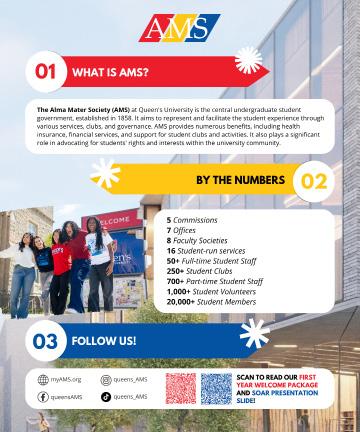
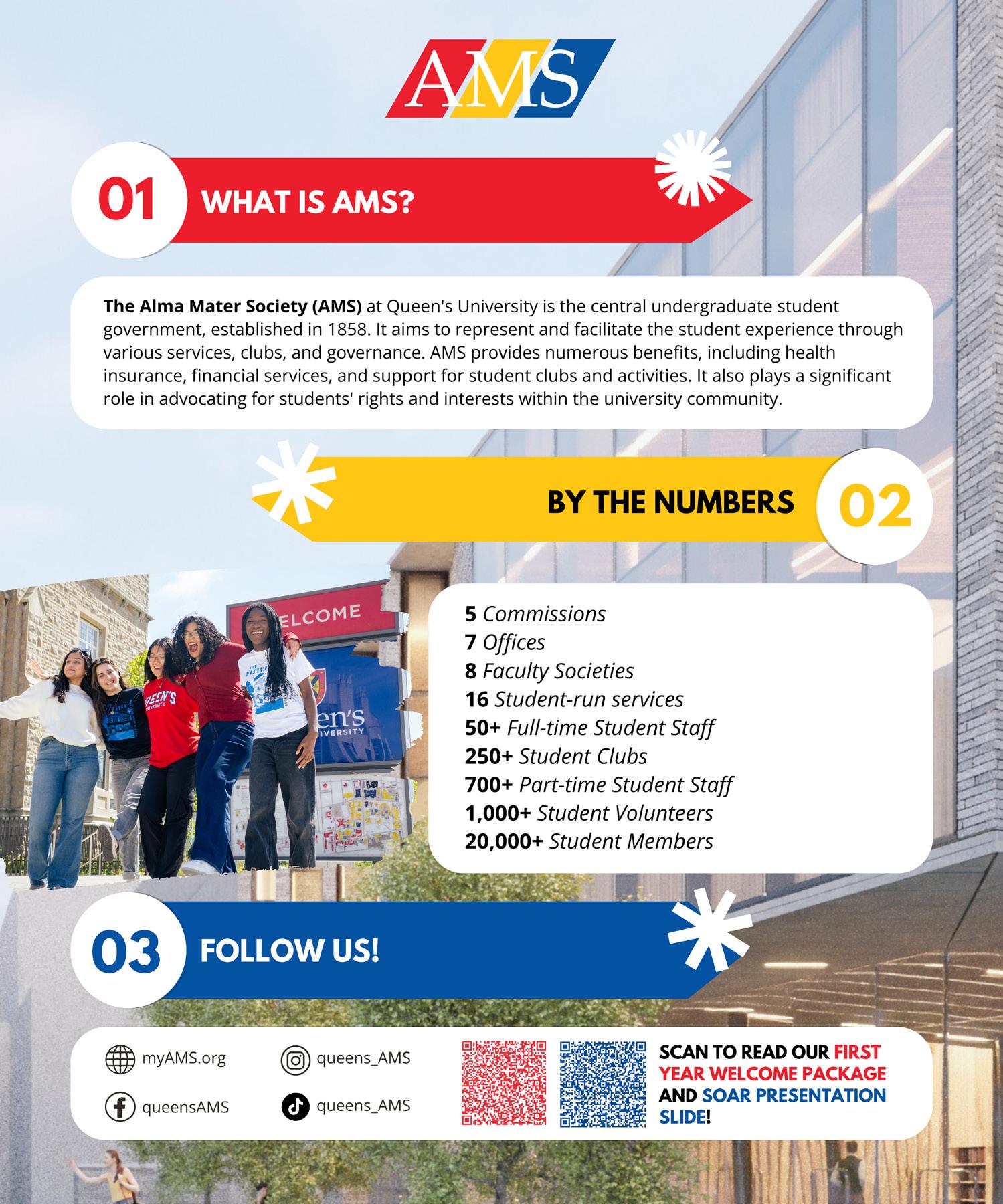
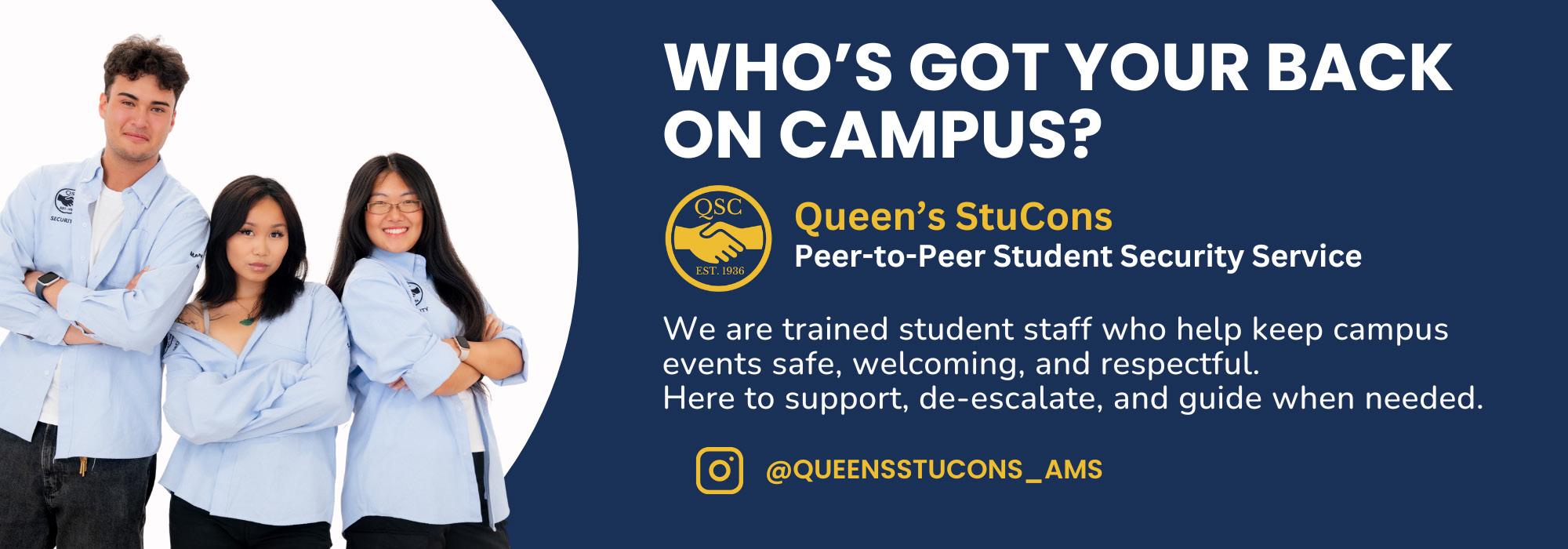

OPINIONS
The University's pushing academic services to breaking point and failing those it serves
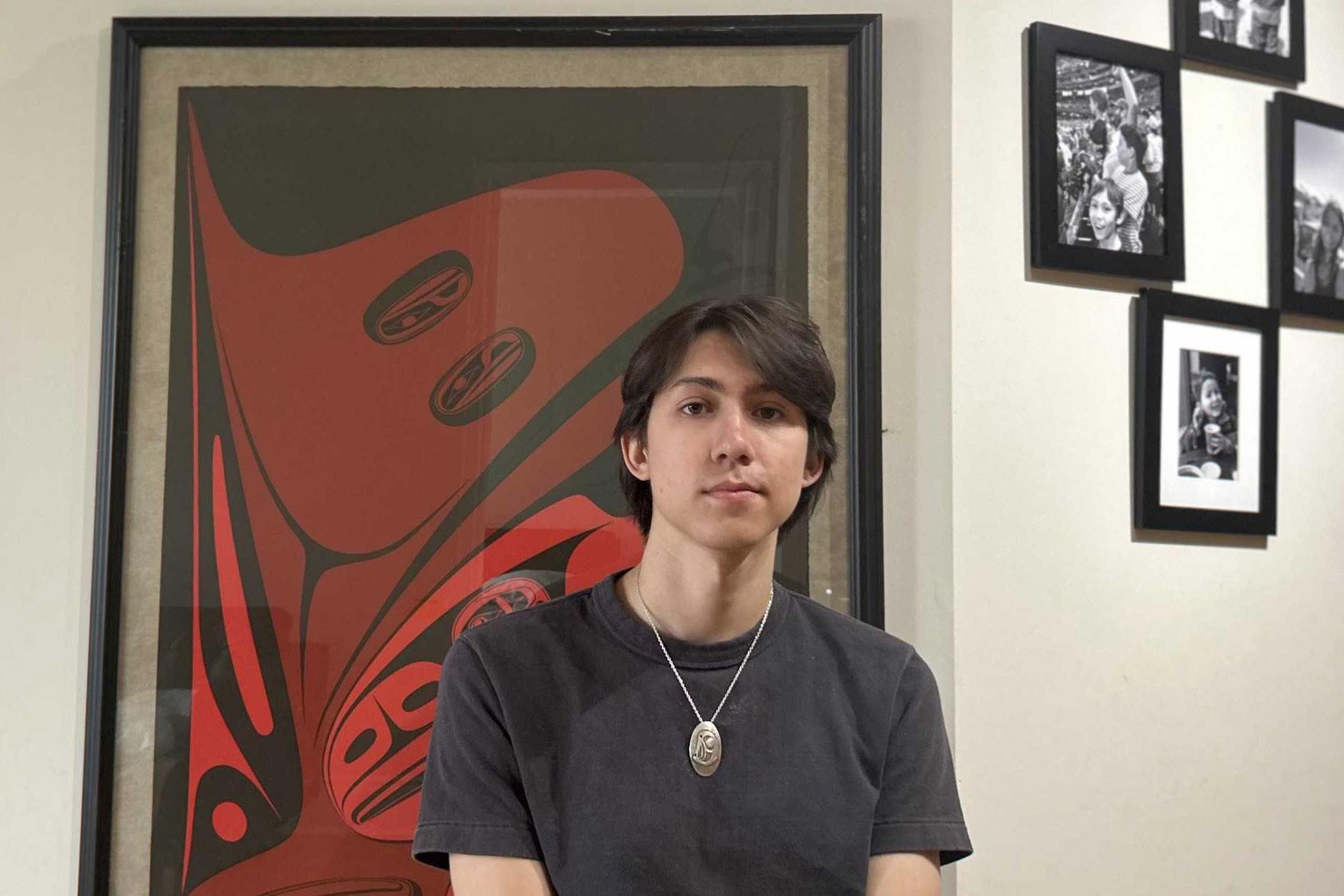
Inaction harms students and staff
Matthew McGuire Contributor
I once needed the help of academic advisors, and now they need our help.
If it weren’t for the academic advisors at Queen’s, I’m not sure I would still be in my program. But the long wait times for appointments, lack of funding, and overall strain on student services has become painfully clear.
Academic advisors play a crucial role in student success at Queen’s. Yet, budget cuts to programs have left many students feeling ignored, with their emails buried in the inboxes of short-staffed and overworked advisors.
The University needs to support its students by supporting its staff because the lack of funding for offices like academic advising is directly impacting students like me as someone whose experience with academic advisors at Queen’s has been invaluable during my university journey.
In first year, I was thrilled to be accepted into one of Canada’s top computing programs at Queen’s. However, I didn’t anticipate the challenges that came with transitioning to university life and the environment I needed to adapt to.
According to a report by Laurentian University, 15.1 per cent of Canadian university students drop out after their
first year. I struggled to adapt to University life, and my struggles began early when my grades dropped below the threshold to stay in the computing program. On top of that, I faced a lengthy process of receiving help to get academic support for an Attention Deficit Hyperactivity Disorder (ADHD) diagnosis.
After failing to stay in computing, I switched to mathematics.
I knew I should’ve asked for help after my first semester when things weren’t going as planned, but I was afraid.
Worried about failing, I avoided the problem and refused to talk about it. I was scared to ask for help—I was stuck. I know this experience isn’t uncommon, and looking back, I realize I wasn’t alone. My advice to any student facing similar struggles is to ask questions and reach out to faculty-specific advisors and Student Academic Success Services (SASS) for help-it's their job.
With quite a bit of assistance, I was able to make it back into computing while staying on track for the program the whole time, but despite their help, the long wait times discouraged me at various points—wait times are notoriously long, and I know others who’ve avoided asking for help for the same reason.
Sometimes it can feel tedious to ask for help, as the busiest times of the school year create a bottleneck in advising systems, with waiting times getting longer and longer. Waiting weeks for a meeting can feel overwhelming and discouraging.
Waiting is expected to some
extent, as there will always be a busy period during the school year, bringing waves of students needing advice all at once. The academic advisors handle students the best; they can help create many resources to try and curb the queues.
But appointments with advisors fill up fast, and students who need urgent help can be stuck dealing with their issues alone. But this isn’t the advisor’s fault; it’s the University’s failure to provide enough funding for advising.
The University doesn’t seem to believe Arts & Science advising is worth the investment, and it’s unnecessary to aid its funding. Academic advising’s endowment is an investment for every student in Arts & Sciences. The University should increase funding for more advisors to relieve the bottleneck. Once the logjam of students is eased with more support staff, more students will have their issues handled in a timely and appropriate manner.
Funding academic advising is proven to improve the lives of students, especially proactive initiatives like the one spearheaded by Mohawk College. One particularly impactful initiative was group advising sessions, which provided students with advice, but also let them see their peers in similar circumstances to them, helping create a sense of community.
Retention rates of students who attended these sessions dropped by 2.5 per cent in their first term alone. Improved and expanded online resources, as
RectoR’s Digest: A fiRst yeAR with A fRontline
view
What I learned from being a student leader’s
EJ Kelvin Contributor
student
When the 39th University Recotr, Niki Boytchuk-Hale, spoke on stage at Duncan McArthur Hall— our largest auditorium on campus at my orientation, I didn’t fully understand what the Office of the Rector did, but I knew I wanted to be part of it. There was something different about seeing a student leader welcome the incoming class with such sincerity.
SUPPLIED BY MATTHEW MCGUIRE
well as AI tools, may be able to help reduce queues by assisting students in answering their questions. But no matter how much you investin technology resources, nothingexcept an advisor can really provide a student with personalized advice and help them craft a plan best suited for their situation.
Academic advisors deserve more funding and support from the University. When students feel let down by their emails going unanswered and feel like they’ve been ghosted by the advisors who were supposed to help them. This creates an even more complex issue. The more students feel let down by advising, the less comfortable they feel talking and reaching out to them. It’s an endless cycle disadvantaging everyone involved. Blame needs to shift to the university, and the institution needs to take accountability.
I encourage you, if you’re one of the many who feel forgotten with ignored and late responses, those who feel unheard and who received a response after a whole week; don't blame the academic advising or SASS staff, call upon the University to do their duty to fix this issue by not throwing the staff who do some of the most important work for us students, under the bus. Academic advising staff deserve better, and we need more staff to help with their stacks of emails.
Matthew McGuire
is a third-year
Computing Student.
The office’s motto, “Be a leader and a servant,” stuck with me and has completely reframed what leadership looks like to me. This mantra was displayed clearly throughout her speech to the arriving students as. Niki didn’t just speak as the Rector; she spoke as a Concurrent Education alumni, someone who had walked the same path that I was just beginning. What stood out most was how she emphasized that your program doesn’t define your path. There’s no single “right way” to do university, and there are more ways to get involved than you might think. For example, her first campus job was at the Queen’s Pub, and somehow it led her to gracefully represent over 30 thousand students to the university administration.
Inspired by her speech, I asked how I could contribute to the office. A few months later—after a formal application and interview process—I joined the team as the Rector’s First Year Intern. Initially, I thought I would be doing very stereotypical “intern things,” like coffee runs and printing. Instead, interning with the Office of the Rector has been one of the most rewarding parts of my time at Queen’s. I have had a hand in reforming student supports through the Rector’s Bursary, coordinating logistics for the most prestigious student honour, the Tricolour Award, and contributing to work that prioritizes student voices, like promoting the on-campus, provincial, and national elections that all occurred within weeks of one another.
As someone who has made themself available to countless students, a piece of advice I’d give to any first-year student would be to get involved. I know it sounds cliché, but it’s repeated for a reason. Whether it’s through a varsity sport, intramurals, Orientation Week, the AMS, or student government, there’s truly a place for everyone at Queen’s. Getting involved is how you find your people, develop your sense of self, and discover what truly matters to you.
Don’t be afraid to step outside of your comfort zone.
Continued online at www.queenjournal.ca
Academic Advisors need more help from the University..





Aries (Mar 21- Apr 19)
Prioritize your health and wellbeing this week. Burning the candle at both ends will cause you to fizzle out and spit sparks at loved ones unfairly, particularly romantic partners.
Virgo (Aug 23- Sept 22)
This retrograde is coming for your NECK. Mercury is your ruling planet and is also in your 12th house of unconscious patterns, so look out for revealing and uncomfortable dreams. Like Gemini, try not to overthink. Ride the wave and accept new insights as gifts


HOROSCOPES




Scorpio (Oct 24- Nov 21) Even when it’s exhausting, it’s important to remember your reputation is a valuable tool for achieving career success, Scorpio. It’s not in your nature to bow and scrape, but it’s a good idea to hold your tongue around bad bosses until retrograde concludes.
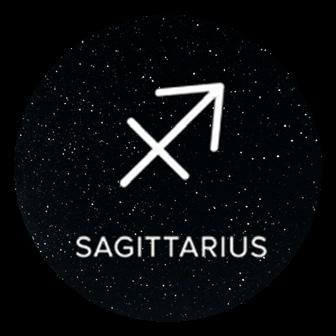
Sagittarius (Nov 22- Dec 21) Take an honest look at yourself this week. Are you happy? Is your career what you want? Are your relationships fulfilling? You creative-minded archers aren’t happy if you’re not authentic, and you may have unconsciously accepted a life you don’t truly love.
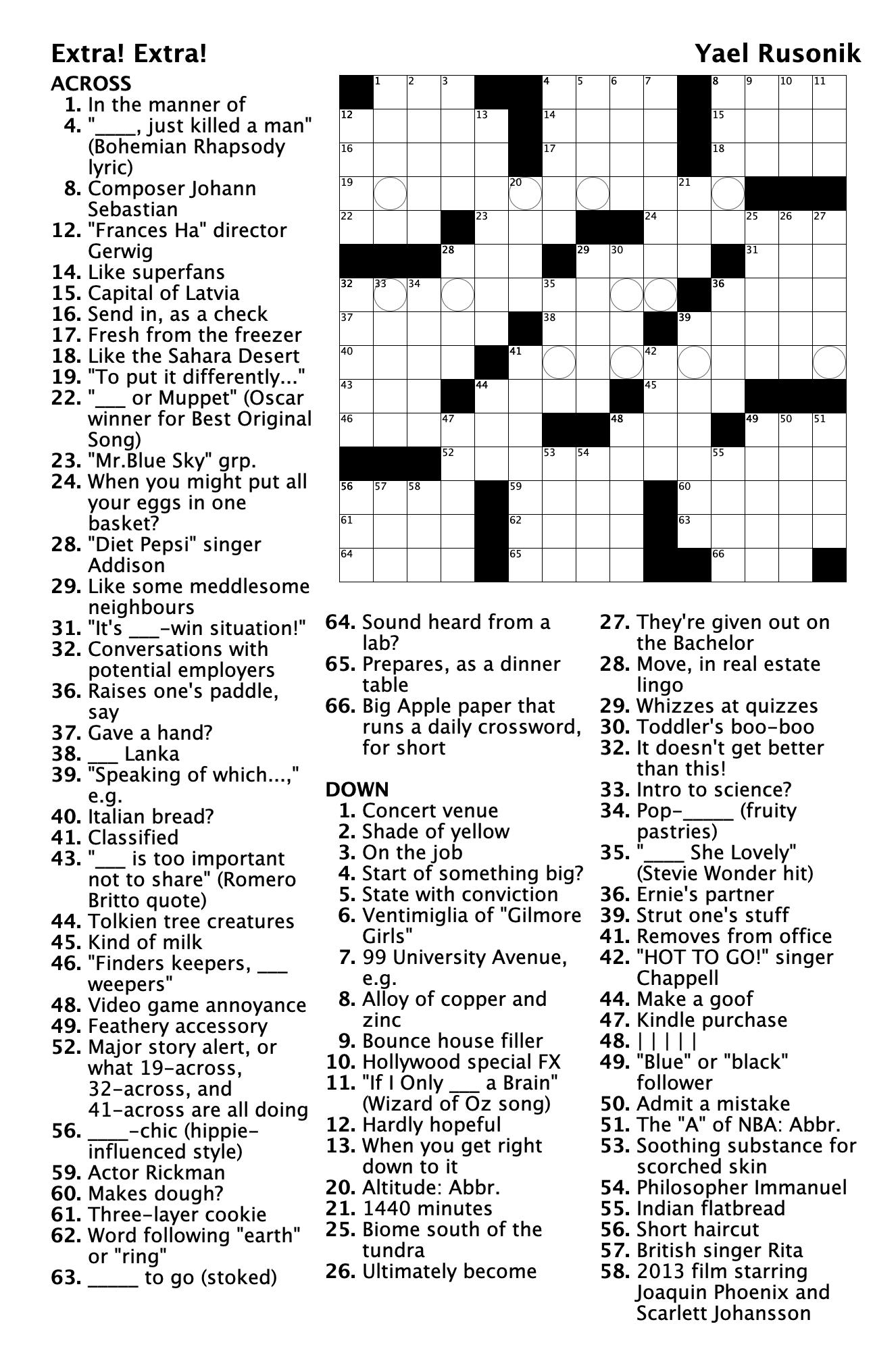





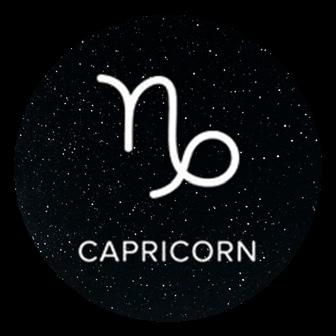
Capricorn (Dec 22- Jan 19)
You’re being taken advantage of financially by a friend, family member, or romantic partner. As Mercury retrogrades through your 8th house of shared resources, closely examine your finances to find the leak and put a stop to it.

Aquarius (Jan 20- Feb 18)
It’s not a good time to jump into a new relationship, but it is a good time to re-examine your boundaries with your current partner(s). What is and isn’t serving you? What haven’t you said that you need to express? Speak your mind.
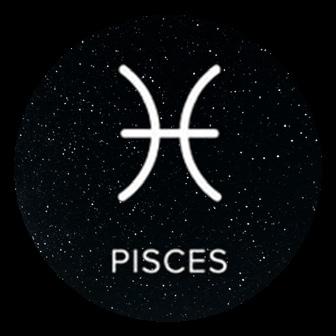
Pisces (Feb 19- Mar 20)
What parts of your routine are you mindlessly following? Your over-crowded schedule isn’t making you happy, but you’re not being discerning about what your true priorities are. Time to simplify and examine which habits truly bring you joy.
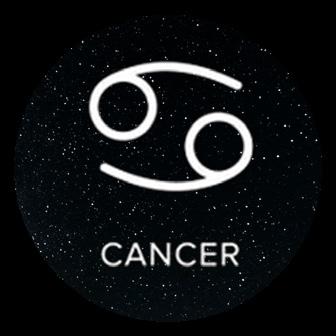
Cancer (Jun 22- Jul 22) Fortune is on your side this week, but you’ll only find luck if you leave the house. Trust that good things are coming and take chances! Just be wise about spending and saving during retrograde season.
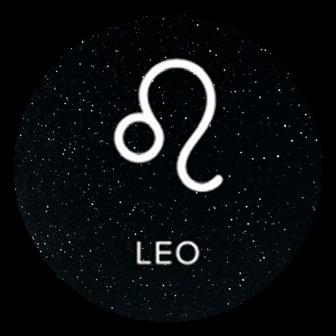
Leo (Jul 23- Aug 22) Mercury retrograde in Leo will cause you to re-evaluate self-image and relationships, two key parts of your identity. Don’t freak out— this will usher in a needed vibe reset for the rest of the year!

Gemini (May 21- Jun 21)
Your ruling planet, Mercury, is retrograding in Leo, so expect some communication issues and beware overthinking. Look forward instead to monetary abundance which will soon befall you!
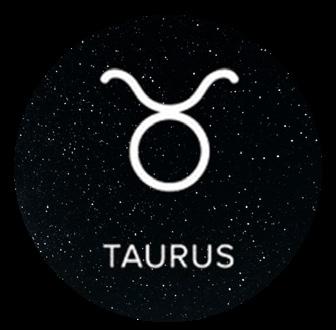
Taurus (Apr 20- May 20)
This is a great week to do something weird. You’re a comfort creature, but shy habits don’t break themselves! Find an open-mic night or impromptu dance circle at the park and dive in headfirst.



Libra (Sept 23- Oct 23)
Mercury is retrograding through your 11th house of social ambitions, so beware miscommunication or the return of unsavory people from your past. It may be wise to reschedule large social events for the time being.


Queen’s alumnus kicking off a new era for professional women’s soccer in north america
‘You are in the right place to chase whatever dream you want,’ NSL president says
Taahaa Lone Senior Sports Editor
Diana Matheson, EMBA ‘23, spent nearly two decades building Canadian soccer’s legacy on the field—now, she’s reshaping its future from the sidelines.
After retiring from professional soccer in 2021, Matheson set out to fill what she saw as a glaring gap in Canadian sports: the lack of a professional women’s soccer league. With 206 appearances as a mainstay on the Canadian national women’s soccer team, two bronze medals at the Olympic Games, and a club career spanning three countries,
Matheson had seen firsthand what the sport could offer to women—and what it still lacked at home. Now, she’s working to build the country’s first domestic league, aiming to provide Canadian players with the opportunities she never had.
Inspired by the gap in Canada’s soccer landscape, Matheson co-founded Project 8 alongside Thomas Gilbert, EMBA ‘23. Project 8 produced the Northern Super League (NSL)—the first professional league for female soccer players in Canada. The league launched in April with teams in Toronto, Montreal, Vancouver,
Ottawa, Halifax, and Calgary.
According to the NSL, the league aims to create a homegrown pathway for the next generation of Canadian players while growing the sport at the grassroots level. As president of the NSL, Matheson is at the forefront of a project that could redefine the future of soccer in Canada.
Between retiring, and founding Canada’s only professional women’s soccer league, Matheson turned to Queen’s to gain the skills to become a trailblazer. Through a partnership between the Smith School of Business and the Canadian Olympic Committee called “Game Plan’, she took part in the 18-month Executive Master of Business Administration (EMBA) program. The program introduced Matheson to Project 8 co-founder Gilbert, who has since taken charge of the NSL’s Ottawa Rapids FC.
The two battled through adversity to make the league a reality. “It was a lot of long days and long months. Lots of uncertainty, and weight on our shoulders, and a lot of rejection,” Matheson said in an interview with The Journal.
In the end, the pair assembled the required support en route to the league’s highly successful debut.
“It was truly everything I was hoping it would be,” Matheson said. She praised the extensive fan support the league had in its first year, highlighted when 14,000 fans attended Vancouver’s inaugural match. Matheson and her staff were happy, but not surprised by the appetite
for women’s soccer in Canada. She pointed to Canada’s women’s soccer player pool, which she says is the third largest in the world. Additionally, she explained that Canada’s top-tier women’s national team consistently drew significant Canadian viewership at the Summer Olympics.
“We had all this data already to show Canada is a world-class women’s soccer market and women’s sport market,” Matheson said. “We just hadn’t tried [to build a league] yet. The people are there, and we just have to get this in front of them, and the market will show up.”
By founding the NSL, Matheson opened the door for U Sports stars to continue their careers at home.
Gaels standouts Kirstin Tynan, ArtSci ’24, and Christie Gray, Comm ’22, have both returned from brief spells abroad to play domestically in Vancouver and Calgary, respectively.
Growing up, Matheson remembers watching women play soccer at the FIFA Women’s World Cup every four years, but she had no indication that she could build a career in the sport. “Now, that is fundamentally different,” Matheson said, referring to the women’s soccer landscape.
“Kids will grow up, whether they are boys or girls, and they get to work towards being a professional athlete in Canada and representing their hometown.”
Additionally, Matheson explained that the league isn’t just for players, but it
will also open doors for women pursuing careers in other aspects of the sport. “This was always about more than being just another sport league,” she said. “It is about providing the choice and the opportunity to players, coaches, referees, women that work in sport business, media, and sports science.”
When talking about the NSL, she makes it clear that this is just the start, as she talks about the future in decades, not years. “We’re still at the forefront of this thing and we expect to keep growing over the next number of decades,” Matheson explained. “[Women’s sports] are growing much faster than men’s sports, so we have to keep growing too.”
Matheson had advice for Gaels aspiring to make a difference, just as she has with the NSL. “One person can move mountains,” she said. “If you see a problem, a gap, or an opportunity out there, one person can make a difference and go after it. You are in the right place to chase whatever dream you want.”
For Gaels soccer fans, the emergence of this league is the perfect opportunity to watch Tricolour standouts pursue their dreams at home.
The NSL season runs until Nov. 15, when the top two teams face off at Toronto’s BMO Field for the league’s inaugural championship.
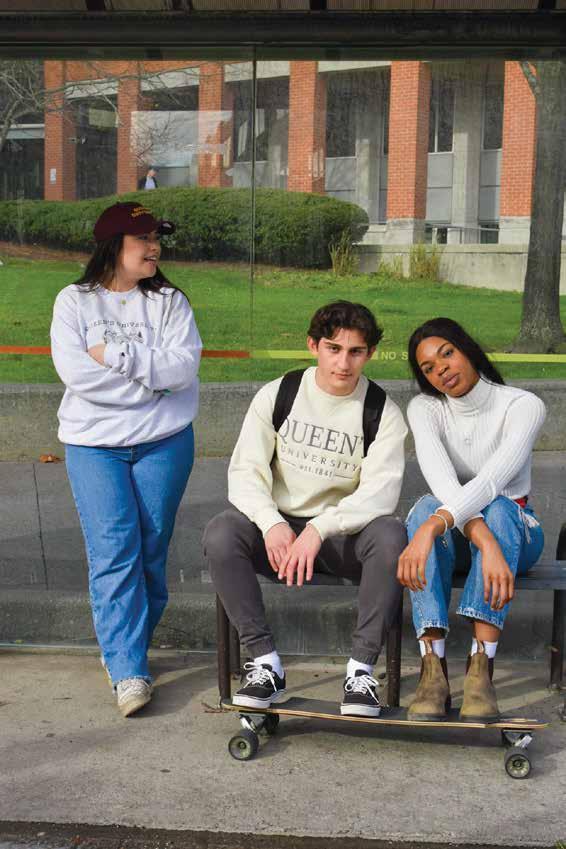
PHOTO SUPPLIED BY NSL WEBPAGE
The NSL season runs till Nov. 15.

Gaels duo shine in Canada’s first professional women’s basketball league
Letlow, Hussey travel to Toronto, play in HoopQueens
Taahaa Lone Senior Sports Editor
This summer, Gaels fans got a sneak peek of their newest basketball dynamic duo at Canada’s first professional women’s basketball league.
Forward Kiyara Letlow, MSc ’26, and guard Brooke Hussey, Kin ’28, made their debuts in HoopQueens—a Toronto-based organization that has broken ground as Canada’s first, and only, professional women’s basketball league.
Representing Team Charge, the pair competed in the league’s fourth season, where the four teams competed over five weeks spanning from June 8 to July 6. Letlow and Hussey’s team finished third, with two wins and two losses.
Founded by former Nipissing University varsity athlete, Nakissa Koomalsingh, HoopQueens brings professional women’s basketball to life from its homebase at the University of Toronto—a vision that has attracted major
marking a major pivot and significant shift toward a revenue-driven model as the platform introduces its first-ever paywall.
The new revenuedriven model for the streaming service includes a full-season all-access pass for $89.99, sportspecific passes for $39.99, and single-game options for $8.99. Other sports will remain free with a registered account.
streaming
Fans will soon have to pay to stream football, hockey, and basketball on OUA.tv
Taahaa
Lone Senior Sports Editor
A new paywall to watch select Ontario University sports is drawing backlash across the province from fans, families, and broadcasters.
Starting this fall, OUA.tv will no longer be free for fans of football, hockey, and basketball with the introduction of subscription fees for live and on-demand broadcasts of its top sports.
Since launching in 2014, OUA.tv has served as the primary streaming platform for Ontario University Athletics (OUA) sports, offering free access that kept fans, families, and alumni connected with their teams. This season, that accessibility comes to an end,
In a press release, OUA officials stated that the shift towards a revenue-driven model is meant to “make streaming sustainable” and to “improve production quality”. With over 1,400 events streamed each season, the added revenue is expected to strengthen the overall experience for athletes and fans, according to OUA officials.
While the OUA’s rationale in adding a paywall emphasizes long-term benefits and a fair investment in coverage—but for the university sports community, the addition of a subscription feels counterproductive, with some fans soliciting negative reactions.
Concerns mainly revolve around the potential decline in casual viewership, making it harder for fans, families, student-athletes, and aspiring sports media professionals to stay connected and support Ontario’s collegiate sporting landscape.
Among those concerned is Radio Laurier 2024 Broadcaster of the Year, and Wilfred Laurier University’s (WLU) Marketing and Promotions Award of Excellence in 2025 as an In-Game Host, WLU student broadcaster, Matteo Beckles—who has been open about concerns about the added barriers for student broadcasters.
“A lot of student broadcasters always want to go back and hear what their calls are like and see what they can improve upon,” Beckles said in an interview with The Journal. “Now, they have a significant paywall just to watch the product. Under the old model, you could watch games for
backing from sponsors. Early into its life, HoopQueens has already secured partnerships with companies such as TikTok, Foot Locker, Red Bull, and Canada Basketball—allowing the league to compensate their players and successfully facilitate an “innovative pipeline for athlete development” according to their webpage.
To build competitive teams, HoopQueens holds tryouts for eligible players, followed by a private draft, where experienced Canadian coaches and executives build teams of elite talent to compete for the William Young Trophy—the ultimate prize in the league.
Hussey, the 2025 OUA Rookie of the Year as well as The Journal’s reigning Women’s Basketball Player of the Year, describes being appreciative for her time at HoopQueens. “It was amazing, and I was really lucky to have this opportunity. It was an opportunity I didn’t think I was going to get, considering that I had just finished my rookie season,” she said in an interview with The Journal
Her rapid ascent to the professional level was made possible after Hussey was personally picked out by Koomalsingh thanks to a standout
free for 24 hours [but] now, student broadcasters have to pay just to review their own work.”
Beckles also raised concerns about how the subscription fee adversely affects families and supporters. “Most of the people watching OUA games are families of the athletes,” he said. “Adding a paywall reduces the number of families who can tune in. It’s not growing the sport.”
Similar sentiments regarding concern over the paywall’s decrease in accessibility are shared by York University women’s hockey commentator, Kyle Cushman. “Canadian university sports should be more accessible,
performance at a three-on-three basketball tournament. “The league itself is doing a lot for women’s basketball, continuing to progress the game in Canada,” Hussey said. “That’s not something that’s super prevalent on the women’s side right now.”
While professional women’s basketball leagues in the United States and Europe have long been established, Hussey praised HoopQueens’ efforts to create a competitive league for Canadian talent and is optimistic for the future. “I truly think the league will continue to grow, and having U SPORTS players in it does so much for Canadian basketball,” Hussey said.
Incoming all-star Letlow had a front row seat to the league’s growth, with this season marking her third at HoopQueens. Letlow was unable to provide a statement to The Journal in time for publication.
Hussey expressed her goal of continuing with HoopQueens and furthering her career as a professional after Queen’s. Right now, though, her focus is on carrying this confidence to another strong season in Kingston.
Continued online at www. queensjournal.ca

subscription fee is just another strain on families, and questions whether many non-family members would splurge on the subscription—something Cushman isn’t alone in stating.
“U SPORTS is supposed to be about growing Canadian sports and removing barriers so people can watch and support Canadian athletes,” Beckles said.
Both Beckles and Cushman agree that the paywall must be accompanied by significant improvements in production quality, but a lack of clarity in the OUA’s press release regarding revenue allocations is keeping viewers in the dark. “The quality of most broadcasts has to improve significantly to be worth a subscription,” said Cushman.
“I wonder how [funding will] actually manifest itself, when it often feels like
it’s up to the school to decide how much they want to invest in broadcasts in the first place,” Beckles said. The OUA’s decision to target hockey, basketball, and football, leaves Beckles also wondering if the OUA would keep the paywalls restricted to those sports, or if they will be used as test runs to install the paywall model on other sports—especially as other conferences in Canada have already adopted broader subscription models. Subscription-based streaming models aren’t unprecedented. In recent years, Canada West and Atlantic University Sport (AUS) have switched to similar paywall models. Canada West offers all-access passes for as low as $94.99, while individual sports options cost $34.99. AUS offers their all-access passes for $99.99, while sport-specific passes cost $39.99. Canada West has used the model for over a decade, but the AUS only made the switch last year. While other conferences charge similar prices, their paywalls also cover sports like soccer, rugby, and volleyball, raising concerns that paywalls could soon extend beyond just football, hockey, and basketball. In addition to the paywall, a new OUA.tv mobile app is expected to launch this fall, with a subscription pass required to watch select sports on the app. The OUA claimed in a press release that the app will improve the viewing experience for fans across devices.
Subscription passes for the 202526 season are now available on the OUA.tv webpage, as the league prepares to roll out its new digital experience this fall.
Want to contribute to Sports? Email journal_sports@ams.queensu.ca
2025-26 full-season all-access pass priced at $89.99.
PHOTO BY SARAH ADAMS
Three Gaels bring home bronze with Team Canada at Under-24 Ultimate World Championships in Spain
‘Coster, Gunasekera, and Miller are fantastic athletes and great representatives of our team and the country,’ says Gaels’ Ultimate Mens Head Coach
Sarah Adams Editor in Chief
This summer, three Gaels Ultimate players took to the world stage representing Canada.
From June 21 to 28, defensive handler Lucas Coster, Sci ’24, Tyler Gunasekera, Kin ’25, and offensive cutter, Dax Miller, ArtSci ’25, travelled to Logroño, Spain, to bring home bronze in the Ultimate Under-24 World Championships with Team Canada Ultimate. This year marks Coster’s first time on Team Canada, as well as Miller’s and Gunasekera’s third time on the team—previously playing for Worlds 2022 in Poland, and England in 2023.
“Honestly, [Worlds] was a weird mix of relief and hunger for more. Gunasekera and I, and even our parents and family, have been through the pain of finishing fourth,” Miller said in a statement to The Journal “It’s brutal. So finally getting a medal felt like getting over a hill.”
But at the same time, Miller explained how he has been left wanting more. “I started thinking about what it’s going to take to get to the finals,” he said. “Worlds are funny that way. Anything can happen in a game, or a tournament. I’ve lost and won quarters, semis, finals—it’s just about being ready.”
For Gunasekera, putting on the Team Canada jersey this year felt different, with top-level players from across Canada and several dual-nationality athletes—some who could have played for powerhouse teams like the U.S. or France—all fully committed to winning. After backto-back fourth-place finishes at the Under-20 Worlds in Poland and Under-24s in
England, putting on the jersey in Spain came with a sense of unfinished business. “It really felt like this was a streak we were going to break in Spain,” he said.
“The most meaningful moment for me was when we scored the final point to finish with a bronze medal. Having lost the third-place game twice before, I was feeling a lot of emotions going into that last game,” Gunasekera said.
He explains that getting over the hump to win bronze and finish off a 10-day, 9-game tournament was nothing short of an amazing feeling. “We had been travelling and training throughout Europe as a group for about 3 weeks leading up to this final tournament, so we were also just exhausted! It was bittersweet that it was all ending, ofcourse,” Gunasekera said.
Miller explains that making Team Canada is always exciting but intense—months of training for one high-stakes week where every game truly matters. Returning for another Under-24 cycle is special for Miller and is already thinking about his last Under-24 run. “I’ve got one more Under-24 run left and I’m already thinking about what’s ahead, trainingcamps, championships, it’s just such a cool team to be a part of,” he said.
While Miller looks ahead to what’s next, Gunasekera reflects on the steep learning curve of adapting to the global stage.
Gunasekera explained that adapting to international play was a major challenge. Unlike the physical style common in Canada and the U.S., teams in Europe and Asia play a less contact-heavy game, and international-level rules reflect that. Although they trained under those rules at camp, he says that adjusting in real time was still tough.
Gunasekera explained how each team’s distinct style posed new challenges. “Belgium and Austria throw a lot of deep shots to make big athletic plays, while Japan used quickness and throws a lot of very difficult and small window throws,” he said. Gunasekera added the coaches had built the team to have a variety of players’ skill sets to play against all the styles they would see in Spain, says but it was still difficult to changetactics and play against multiple styles in the same day.”

“But we pulled it off. That one meant a lot,” Miller said. “This year helped me come to terms … that you just have to show up and play hard, and trust that your moment will come.”
For Gunasekera, Worlds re-ignited his love for this sport.
“I now have a goal to make the senior national team and will continue to do what I have to get there,” he said.
Skill and leadership from the three players have been recognized back home as well, with all three previously holding captain roles on the Queen’s Men’s Ultimate team.
“Coster, Gunasekera, and Miller are fantastic athletes and great representatives of our team and the country,” Queen’s Head Coach for Ultimate Men’s, Pete Galbraith, wrote in a statement to The Journal. “They were in fact our three captains this year and each were leaders and well respected on and off the field.”
He reflected on coaching Dax and Tyler with the Canadian Under-24 Mixed Team in 2023, where they narrowly missed the podium. “It’s so nice to see their efforts rewarded with a bronze this time around,” he added.
As for Coster, Galbraith described him as a longtime anchor of the Gaels ultimate team—an exceptional player whose impact often extends beyond the stat sheet.
“Coster has long been a core piece of our offence and an exceptional contributor in subtler ways that aren’t always visible on the scoresheet,” he said.
This year marked Coster’s first time representing Canada, where he served as a steady, focused presence on both sides of the disc throughout Team Canada’s Mixed campaign, according to Galbraith.
Gunasekera reflects on his time at Queen’s, describing the experience as amazing and is sad
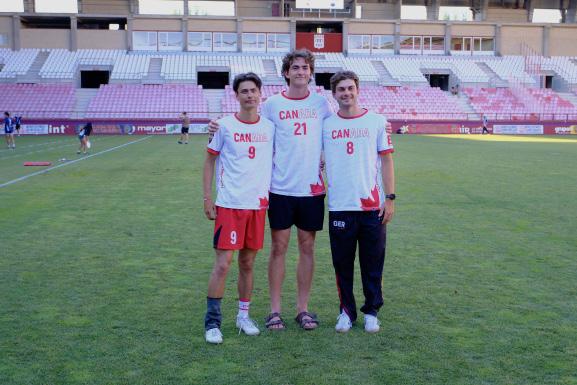
PHOTO BY ELLA THOMAS
to not return for another season. “I know that this success will continue thanks to the unbelievable team culture and world-class coaches this program has,” he said. This fall, Gunasekera will be moving to Ireland to pursue a Master’s of Physiotherapy at the University College Dublin, and play ultimate with the current champions of Ireland, Dublin Ranelagh.
Miller will be back at the World stage shortly, playing on the Senior Men’s National Team at the World Beach Ultimate Championships in Portugal this November. “That’s the next goal, trying to win gold,” he said.
The Gaels Men’s Ultimate team will begin their season this fall, with Miller as the sole returning player from the previous trio.
wheeler-dee set to compete for canada at the Junior pan american
PanAm games are
games
his focus centered on gaining as much experience as possible.
‘one of my biggest accomplishments,’ says
Wheeler-Dee
Taahaa Lone Senior Sports Editor
Gaels track star, Jude WheelerDee, ArtSci ’26, is ready to take his speed from Queen’s to the world stage.
From Aug., 9 to 23, reigning Gaels Men’s Athlete of the Year, Wheeler-Dee will be traveling to Asunción, Paraguay for the 2025 Junior Pan American (PanAm) Games as part of Canada’s first Junior Pan American Games Athletics team. Competing in the 1500m event, Wheeler-Dee will face off against top-tier under-23 athletes from across North and South America, with the games having a total of 334 events across 28 sports.
For Wheeler-Dee, the event will not only be his first international competition, but his first time donning the Maple Leaf. “I’d probably say it’s one of my biggest accomplishments and that I’ll look back on with the highest regard,” Wheeler-Dee said in an interview with The Journal.
“A couple of years ago, I didn’t really think I would be in this position. But as of recent, it’s been like, that’s the goal and the standard. I just know once I go and I come back, I’m going to be just thinking about how I can get back there,” he said.
While the Junior Pan American Games could mark his final competition at the under-23 level before aging out of the circuit, Wheeler-Dee describes himself as thrilled and excited, with
“I know this is hopefully the first step of many [of an international career], and hopefully the first of many national teams to make,” Wheeler-Dee said. “I want to take it all in and see what this environment’s like so I can be more prepared for future years.”
It’s clear, though, that Wheeler-Dee won’t be unprepared when he gets to Paraguay, thanks to his experience against high-level competition in Canada. He credited his experience at high-level track meets in the North American circuit for preparing him for elite competition, whether it’s in Paraguay or beyond.
After recent success at both the collegiate and international levels, Wheeler-Dee explains how the Gaels Cross Country and Distance Track program is focused on long-term growth.
“We don’t want to be a program or a team that just has this little bit of a success story and have a season or two where we’re competing on the national stage for the national title,” Wheeler-Dee said. “We’re really trying to build something that lasts a lot longer.”
Wheeler-Dee’s selection for Canada’s inaugural Junior PanAm athletics team is a milestone for both his career and Queen’s athletics, and with his success at the collegiate level, he is poised to make his mark on the international stage.
The events will be available to watch for free on the Panam Sports Channel’s website from Aug. 9 to 23, with athletics events running between Aug. 18 to 22.
Left to right: Lucas Coster, Dax Miller, and Tyler Gunasekera.
ARTS & CULTURE
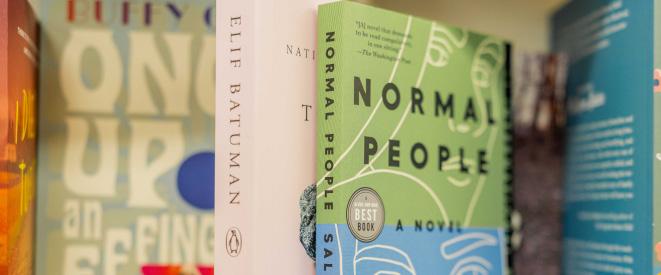
Required readings to survive the emotional chaos of first year
Tried-and-true comfort lit from one English major who weathered first year’s storm
Eva Sheahan Features Editor
First year might feel like too much, but these books will understand you when it seems nobody else can.
As a literature major, I’ve often found solace and representation in novels, especially during difficult transition eras like the leap from high school to university. These are the books that, as a confused and high-strung first year student, felt like an awkward but
warm hug through the chaos of roommates, dining halls, and stilted socializing.
When campus feels more like sarcasm and satire than self-discovery
Elif Batuman’s The Idiot follows Turkish-American Selin as she starts her first year at Harvard College. The story goes into her experiences of new classes as a linguistics and languages student, the friendships she forms, and her growing email correspondence with an older Hungarian student named Ivan.
The Idiot is an stellar coming of age novel that speaks directly to the experience of starting first year at university—the confusion, the surreality, and the absurdity of it all. At
its core, this story is witty and hilarious, capturing the intellectual excitement of university with subtle references to philosophy and literature, all while being told by Selin’s captivating voice as she tries—and fails—to figure out who she is and why things are the way we are.
Turning eighteen is a weird and confusing age—where one is caught on the cusp of adulthood and teendom. During first year, it’s normal for students to feel inexperienced and naive while also feeling like they understand the world better than most of the adults around them. The Idiot captures this cognitive dissonance and Selin’s confusion throughout her first-year experience with honesty.
We’re often told—by books, films, and even family—that university is where you’ll “find yourself.” But in a world as absurd and fleeting as this one, I’m not sure that’s ever fully possible. In The Idiot, Selin stumbles through university life, trying to uncover her true passions while finding her place in society.
Selin challenges typical ideas, professors, and syllabi that most students take at face value, and in doing so, points to aspects of academia’s ridiculousness that are typically overlooked. She does so with wit and dry humor that frequently made me smile.
Batuman seems to point out that while we may not always understand life or ourselves, the process of self-discovery doesn’t have to be dark and daunting.
When you are feeling love, loneliness, and everything between
While I’m far from the first person to recommend Sally Rooney’s Normal People—a romance set in Ireland following Marianne and Connell’s friendship and love from high school to Trinity College—I will give credit where credit is due.
I initially read this novel in grade 11, and every time I reread it, I gain something new from the story as I age alongside the characters. While the heart of the story is a tender and sensitive love shared between Marianne and Connell—who seem to understand one another
better than anyone else—the novel also discusses the experience of university in-depth.
Growing up in a small town where hockey took precedence over everything else, I felt more myself in university, where I had the freedom to explore passions like reading and writing. I felt this boost in confidence mirrored in Marianne’s story, as she was always an outsider in high school but began to find deeper ease and sturdy footing in my first year of university.
Similar to myself, Marianne approaches high school quite passively, whereas in university, she becomes an active member of her community and feels a sense of belonging at Trinity College and university as an institution.
On the flip side, Connell is an English literature major, like myself, and I often relate to his critiques of pretentiousness within academia—as well as his inability to truly express himself through literature, despite the deep bond that he shares with it. First-year Connell’s academic experiences remind readers that everyone’s relationship to academia is different.
Normal People paints an unflinching image of university students who love, cry, laugh, make mistakes, and debate over wine— all while pretending to be fully grown adults.
Summer ‘25 still hasn’t found its rhythm This season is still missing its viral anthem
Nadia Garcia Assistant Arts & Culture Editor
As July draws to a close, Gen Z is still waiting for 2025’s song of the summer to be decided.
Megan Thee Stallion’s “Hot Girl Summer” became a cultural phenomenon in 2019.
Charli XCX’s “Brat Summer” turned 2024 into a neon rebellion. This summer, fans are waiting for the needle to drop on a new hit. In recent years, pop singers have dropped songs that shape the season’s mood, aesthetics, and politics—confidently using their artistry to influence millions. Summer anthems have viral Tik Tok dances, fashion trends, and even political campaigns— proving pop isn’t just background noise, it’s cultural currency.
Over the past several summers, social media trends have reflected school-age Gen Z’s hopes for the summer at hand. The “Hot Girl Summer” trend of 2019—which, according to Megan Three Stallion, was about “being the life of the party”—has remained in the public lexicon
and represents young people’s continued desire to live life to the fullest following social distancing mandates. The nostalgic revival of
The singer of the summer calls the shots by embodying “cool.” Coolness is not effortless, however: seasonal success is the result of an artist’s careful engineering.
branding, which was easily recognizable on social media— visibility being a must-have quality in the current online era.
Branding that’s easy to recognize online is easy to share, contributing to further virality. This
her new swim line, whose wearers proclaim to the world they’re still celebrating “Hot Girl Summer.” After Charli XCX declared “a strappy white top with no bra” a part of Brat Summer’s uniform, white tank tops increased in popularity.

‘indie sleaze’ set the scene for Charli XCX’s 2024 “Brat Summer” trend, noted for its “trashy” vibe that defied the exclusive clean-girl aesthetic and encouraged fans to embrace their messiest selves.
Taking over summer requires strategic moves on the artist’s part. Singers must navigate trend cycles to ensure internet popularity.
Charli XCX excelled with Brat’s simple lime-green
instant fame can be a powerful marketing tool, which savvy summer artists capitalize on to increase staying power.
Megan Thee Stallion still reaps the benefits of her “Hot Girl Summer” trend through
When pop artists use clever marketing strategies and unqiue branding to capture online attention, they appeal to massive amounts of young, voting-aged people. This can fuel real-world change in the form of political action.
During the 2024 U.S. presidential election, the “song of the summer” led to realworld political impact.
Last summer, Charli XCX leveraged Brat-inspired popularity to support presidential candidate Kamala Harris. XCX’s tweet that “Kamala IS brat” opened the floodgates for a green-tinted, meme-fuelled campaign strategy which attracted younger voters—an undeniable result of Charli XCX’s own social-media savvy marketing techniques.
A new aspect to the “seasonal song” trend emerged as a result of Brat’s political influence be crowned queen of the summer, and you can rule it all.
Selected readings for first year.
GRAPHIC BY ARDEN MASON-OURIQUE
Female musicians have set the tone in past seasons..
PHOTO BY JASHAN DUA

Everyone gets a seat at the table
Marijka Vernooy Senior Arts & Culture Editor
After shooing loved ones out of your dorm and throwing a blanket over your new twin XL mattress, your next big task as a first-year is finding somewhere to eat, and more importantly, someone to eat with.
Members of Queen’s Hospitality Team and The Journal’s hungriest editor are here to serve the inside scoop on what’s hotto-go at campus’s bustling, “all-you-care-to-eat” dining halls, and how to navigate this new social scene.
As an appetizer, curious gourmands should consult the Food at Queen’s University page to explore different meal plan options. There are three dining halls at Queen’s: Leonard and Ban Righ Dining Halls on the main campus, and Jean Royce Dining Hall on West Campus.
Having lived on-campus as a first-year student, I recommend the “Weekly 19 Dining Hall Meals” Plan for its convenience and community. Don’t rely too heavily on off-campus food: University can be tough, but eating soggy fries in your dorm alone is tougher! Consider dining with friends, roommates, and even lab partners.
In fact, some of the best meals I’ve ever had have been quiet, groggy, greasy breakfasts with friends after a long weekend, corroborating each other’s’ hazy memories from the night before.
When it comes to breakfast, nobody beats Leonard Dining Hall (Lenny), the largest on campus.
Lenny features a dizzying array of soups, salads, breakfast options—mercifully served late on Sundays. I give Lenny is a 9/10, because I’m an easy grader, and if I look back on it, the food poisoning I got that
one time first-year was probably unrelated.
Campus Executive Chef, Colin Johnson, agrees that Lenny is also his favourite spot to eat. “I enjoy the all-you-care-to-eat variety and that it allows me [to] observe the students to see what foods they are enjoying”, Johnson wrote in a statement to The Journal. Johnson has been working at Queen’s University since ’93, beginning as a Sous Chef at Lenny and stepping up as the Campus Executive Chef in 2008.
“I think [you] would be surprised by the sheer volume of food it takes to feed 4,800 residence students every day,” he said. “For example, we served 619, 745 eggs across campus food locations last year, and purchased approximately 45,000 pounds of bananas.”
The other on-campus dining hall, Ban Righ, has gorgeous windows and sweeping wooden tables staight from the pages of Harry Potter. While Lenny is often packed with people trying to get the whole hall to sing “Happy Birthday” to their friends at nine in the morning on a Saturday, Ban Righ is typically a comfortable, quiet place to eat.
However, Ban Righ’s food gets a lower ranking from me: 7 out of 10. I’m a Lenny loyalist.
I lived on main campus first year, but I found Jean Royce Dining Hall a great spot to eat after early-morning first year lectures at Duncan MacArthur Hall on West. The offerings are like the other two halls, but less diners mean a better chance of snagging hash browns before they run out.
Also, it’s a great place to avoid people you don’t want to run into on main campus—another firstyear rite of passage.
Continued online at www.queensu.ca

Queen’s Players: You just
had to be
there
Your ticket into this silly scene is ‘worth the twenty dollars’, director says
Marijka Vernooy Senior Arts & Culture Editor
With chaotic comedy, sharp Gen Z references, and a soundtrack that slapped, Queen’s Players lit up the stage at their summer show, proving once again that no one roasts pop culture quite like they do.
The floor was lively, packed, and covered in beer as the Queen’s Players (QP) performed the final night of “Work Hard, Players Harder: A Public Sexy Announcement” on July 19 to a riotous crowd in The Mansion’s attic space.
The crowded house was exemplative of the thriving social scene the sketch group inhabits and an impressive feat for a student group during Kingston’s summer months.
A mix of musical acts, sketch comedy, and audience participation brought something for everyone. One eccentric scene featured caricatures of pop singer Jack Harlow, influencer Nara Smith, generative Artificial Intelligence (AI) engine ChatGPT, and Matilda’s father from Roald Dahl’s 1988 children’s book, Matilda.
The show’s story was hard to follow in some parts, feeling less like a scripted event and more like an impromptu play your cousins put on at Thanksgiving. However, in the chaos was the real magic of QP: The warm feeling of family.
The raucous enthusiasm of the Players themselves is tough to capture in print alone, so The Journal sat with a few members to discuss the event.
“The first difference between a summer show and a winter show is that it’s a lot hotter,” Linden Imeson Jorna (BFA ‘26), cast member, jokes in an interview with The Journal. “The Mansion does get very warm.”
Jorna, a Players alumni, has experience bringing the heat. “In my first show, I played a cigarette, which was very fun,” they said. Jorna describes QP as “A chance for people to express these creative talents that they’re walking around with. You get to try something new and be a pop star every week.”
Interacting with the group’s community is a part of life at Queen’s for Jorna. “You see these people on campus all the time, and you’ve built such a bond with them. You’re always welcome back in that space,” they said.
The emphasis on returning to QP year upon year contributes to this community, as shows sometimes feature alumni twenty or thirty years after their last show. “We love when our alumni come back and bring [their] expertise,” VicePresident of QP, Nick Neokleous, MSc ’26, said in an interview with The Journal.
“[There are] opportunities for [those] who have never been in a
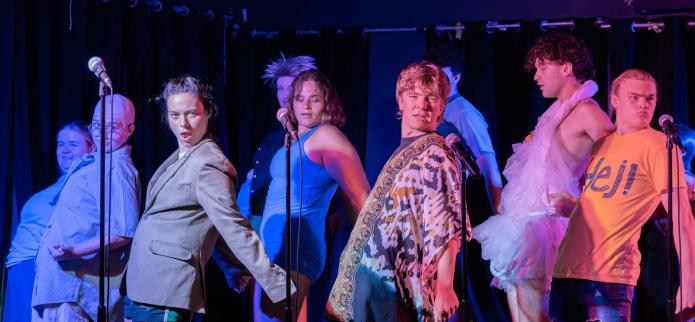
role before to take one on, which one of the beautiful parts of the club,” Neokleous adds.
Applications for new members open seasonally through the Players’ website, though all members must be 19 or older, to comply with The Mansion’s alcohol license. For those who don’t fancy liquid courage, “We also have juice!” Neokleous said.
Of course, all QP’s proceeds go to charity. Where else can you crack a Molson—or Fruitopia— and feel like an upstanding citizen? Charity applications open in the winter, and anyone can apply.
“We do seek a lot of input from the club and community on where these funds should go,” Neokleous says.
“The board will collectively think [of] charities in community and bring them to the annual general meeting. But we also have forms and processes for people to bring forth charities that are important to them,” he says.
“We feel we can be good stewards for the community and also support the values of our club members.”
Collaboration is at the heart of the Players’ creative process.
Music Director Edward Haag, ArtSci ’25, kicked things off by choosing the opening numbers in the first week of rehearsals—but from there, the ball started rolling and team efforts built the show’s momentum.
“When we have our first meet and greets, we [play an] MP3 file of all the cuts in the show: how the openers are going to sound for everyone in the crowd,” Haag said in an interview with The Journal. Watching the whole team process the reality of a new production in this moment is Haag’s favourite Players tradition.
“Each group gets to think about how the show is going to start working. Lots of wheels turning. It’s a beautiful moment,” Haag said.
At every level, the Players’ experience is full of such moments. For Arielle Penovka, Sci ’26, getting to direct this summer’s show was a highlight
in and of itself. “It’s such a rewarding process to sit there and laugh my butt off every week. It’s the best feeling in the world,” Penovka said in an interview with The Journal.
“We’ve got a lot of people who [come] in [having] never performed, and they really
overcome fears. In a month [they’re] on stage singing their heart out, being vulnerable and silly,” she said. When asked to summarize QP in a single sentence, all four cast and crew members looked at each other and shared a laugh. “It’s a great show,” Haag says. “Worth the twenty dollars,” Penovka adds.
Want to contribute to Arts and Culture? Email journal_ac@ams.queensu.ca

PHOTO BY JASHAN DUA
“Work Hard, Players Harder: A Public Sexy Announcement” ran from July 16-19.
Queen’s
wasn’t my dream, but it became my story
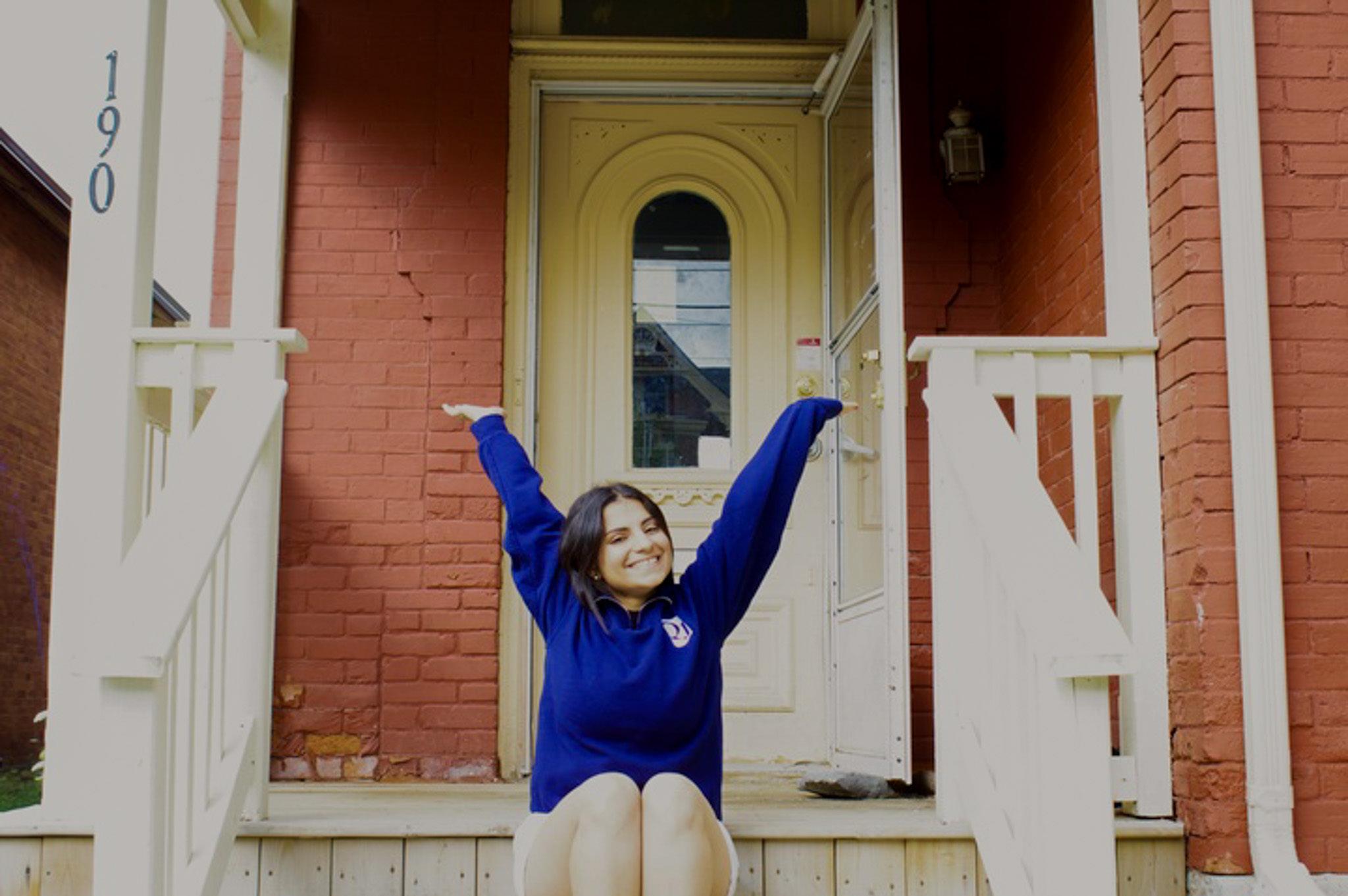
Stories shape us, even when we don’t see it at first
Meghrig
Milkon,
Editor in Chief
Queen’s was never where I imagined myself, but four years later, I can’t imagine having been anywhere else.
When I first arrived in Canada in 2019, I felt that I was granted a whole new world of possibilities. Coming from a war-torn country, the shift from focusing solely on survival to having the freedom to make meaningful choices felt both surreal and overwhelming. But even as the world around me expanded, one desire stood out clearly: I wanted to tell stories. and pursue journalism.
As I started exploring which universities to apply to in grade 12, I focused almost entirely on journalism programs. That’s why Queen’s initially sat at the bottom of my list—it didn’t offer a journalism program. Instead, I had my sights set on Carleton, due to its strong reputation in the field.
I hadn’t yet realized that chasing my dream would come at the cost of risking both the culture I was raised in and the one I was subjected to. Split in two, I had to learn to speak two cultural languages—one unspoken but deeply felt, the other spoken yet rarely understood.
One night, I got an e-mail notification from Carlton, and with my heart pounding in my chest, I anxiously checked the email. There it was—a letter of acceptance to
Carleton, the journalism program I had always dreamed of. I was in. I made it. For a moment, it felt like the world cracked open with possibilities. But that feeling was short lived.
After receiving my acceptance letter, I was met with rejection—not from the school, but from my parents. They refused to support my decision to pursue journalism and leave the city we had just immigrated to.
“For a moment, it felt like the world cracked open with possibilities. But that feeling was short lived
At the time, my parents’ logic didn’t make sense to me. Everyone around me was doing the same thing—moving to new cities, even new countries, to chase the degrees they dreamed of. So I fought back with everything I had, trying to explain why this mattered to me so deeply. But they saw something I couldn’t yet understand I wasn’t just a student—I was an immigrant teenager in a world none of us fully knew. A world with unfamiliar rules, a language that wasn’t ours, and systems they had never learned to navigate.
What I saw as an opportunity, they saw as uncertainty. And what I was asking, felt to them like too much all at once.
As the deadline got closer, the decision was made for me—I would accept my offer to Queen’s University.
“What I saw as an opportunity, they saw as uncertainty. And what I was asking felt, to them, like too much all at once
It felt convenient, close to home, and above all, safe. But I never truly felt connected to it. Queen’s wasn’t the dream, just the compromise. As an offcampus student, orientation felt distant, and so did the campus itself. I threw myself into work instead, clocking over 40 hours a week—sometimes even more— starting that summer before my first semester. It felt like survival mode all over again, just in a different setting.
When I started my Philosophy program that fall, I didn’t feel any real passion—just the pressure to finish a degree. I was going through the motions, disconnected. But then I enrolled in PHIL 111 with Professor John Miller. In the first few weeks, we began exploring the idea of happiness. Something about those conversations grabbed hold of me.
For the first time in my education, I felt a spark. Still, it wasn’t enough. I was searching for something more, something that aligned with the dreams I had once clung to so tightly. So, I started looking for a campus newspaper to get involved with and that’s when I stumbled across a big red house on University Avenue. More specifically, 190 University Ave. also known as The Journal House.
Still unsure of how I could
contribute, I hesitated to approach the Editors in Chief. I didn’t think I had anything meaningful to offer—or even if I’d qualify for a job. So, I held back. But then, just after scraping through my first year, I saw a hiring post for the position of Assistant News Editor position at The Journal and I applied, fully convinced I wouldn’t get the job, but willing to try anyway. By some kind of magic, I made it through a few rounds of interviews. Then, one day, I got the call: I was hired. I don’t think anyone could have been happier than me in that moment. Looking back, I’m convinced that this was the turning point, the moment that changed my entire experience at Queen’s.
“Looking back, I’m convinced that this was the turning point, the moment that changed my entire experience at Queen’s
Being an Assistant News Editor in my second year and starting my major in philosophy, felt like discovering a passion I didn’t know I had. Suddenly, I was excited about my courses, about the stories I was assigned, and about the opportunities unfolding before me. For the first time in a long while, I felt truly alive and driven. Looking back, I somewhat understand why my parents didn’t want me to go to Carleton—they
were scared, and honestly, I don’t blame them. But no matter what, my passion and drive stayed the same. Even now, what keeps me going is this desire to tell people’s stories. If you look to your right, there’s someone with a story to tell. Look to your left, and there’s another.
So many stories don’t get heard, so many voices go unnoticed. And sure, not everyone leaves their hometown to chase their dreams, but they find ways to make those dreams come true.
Now, four years later, with four different roles on the masthead and an internship at the local paper under my belt, I’ve never been more sure of where I’m headed. I was wrong about where I would find my passion, but right about journalism and telling people’s stories—and I’m grateful for the chance I’ve been given to chase that dream.
“Now, four years later, with four different roles on the masthead and an internship at the local paper under my belt, I’ve never been more sure of where I’m headed
To anyone whose unsure of where they belong or what their path looks like, keep pushing, keep searching. Your story is waiting to be told, and so is your place in this world.
Meghrig reflects on her four years at Queen’s.
PHOTO BY SARAH ADAMS
